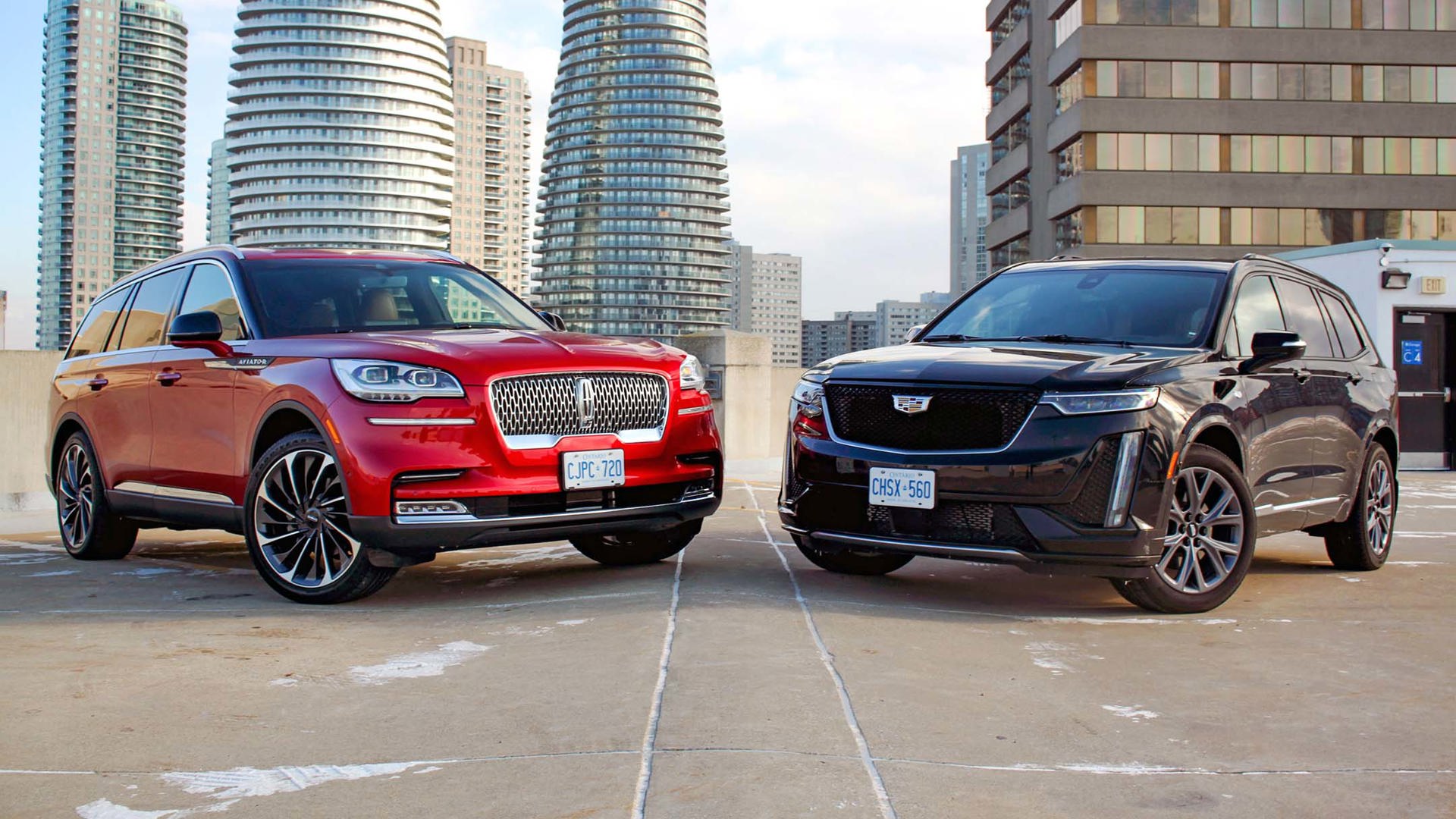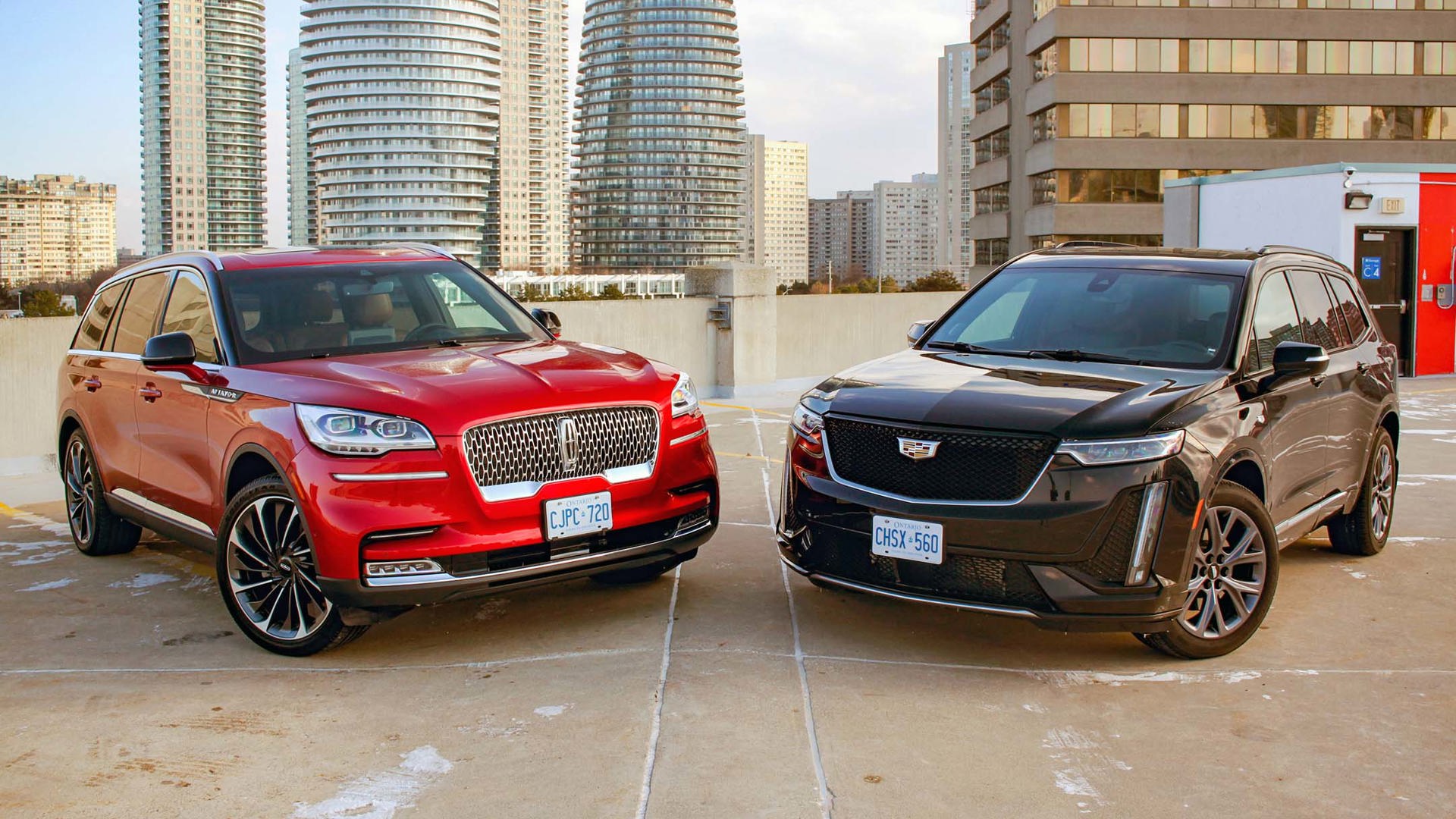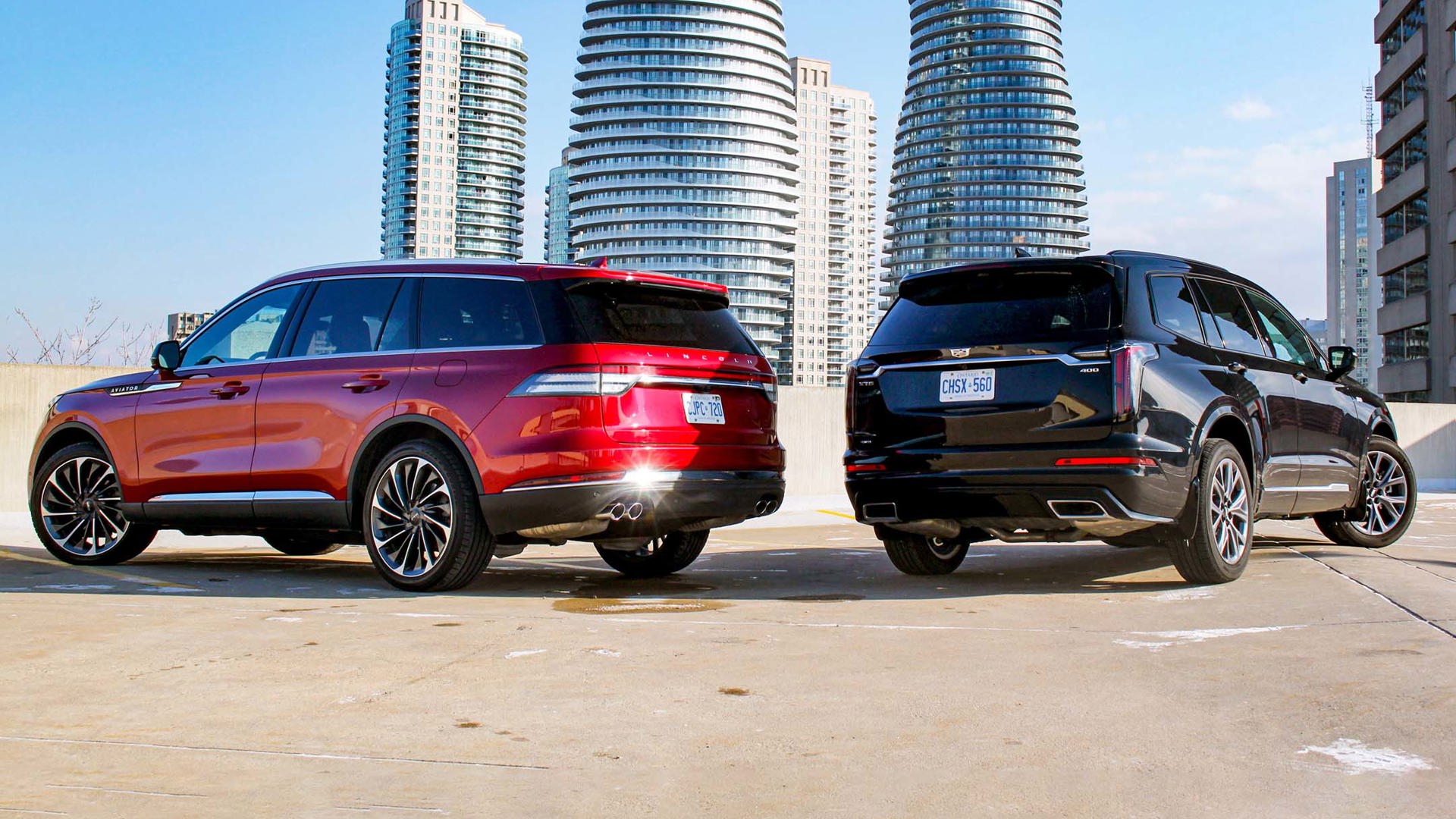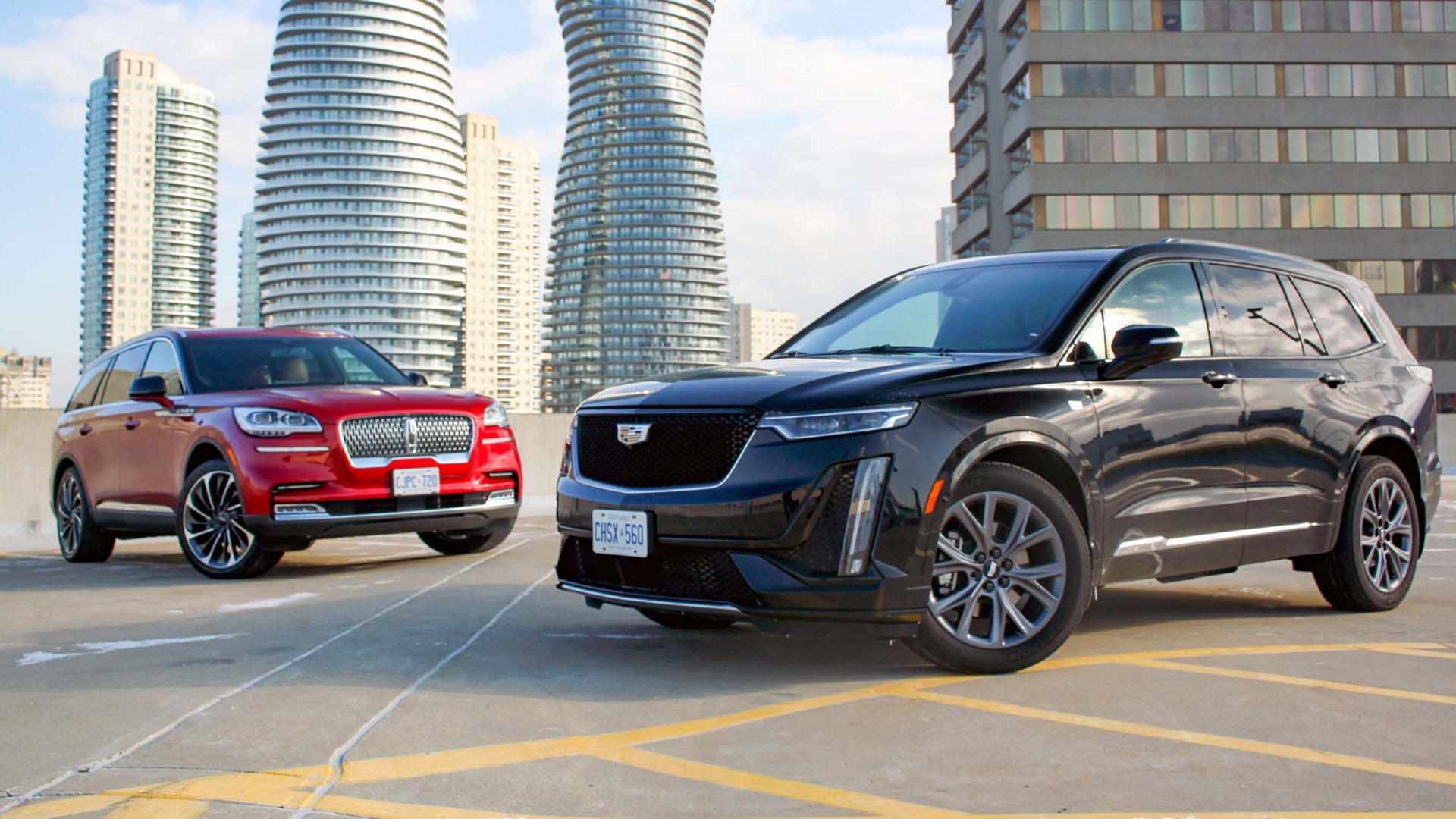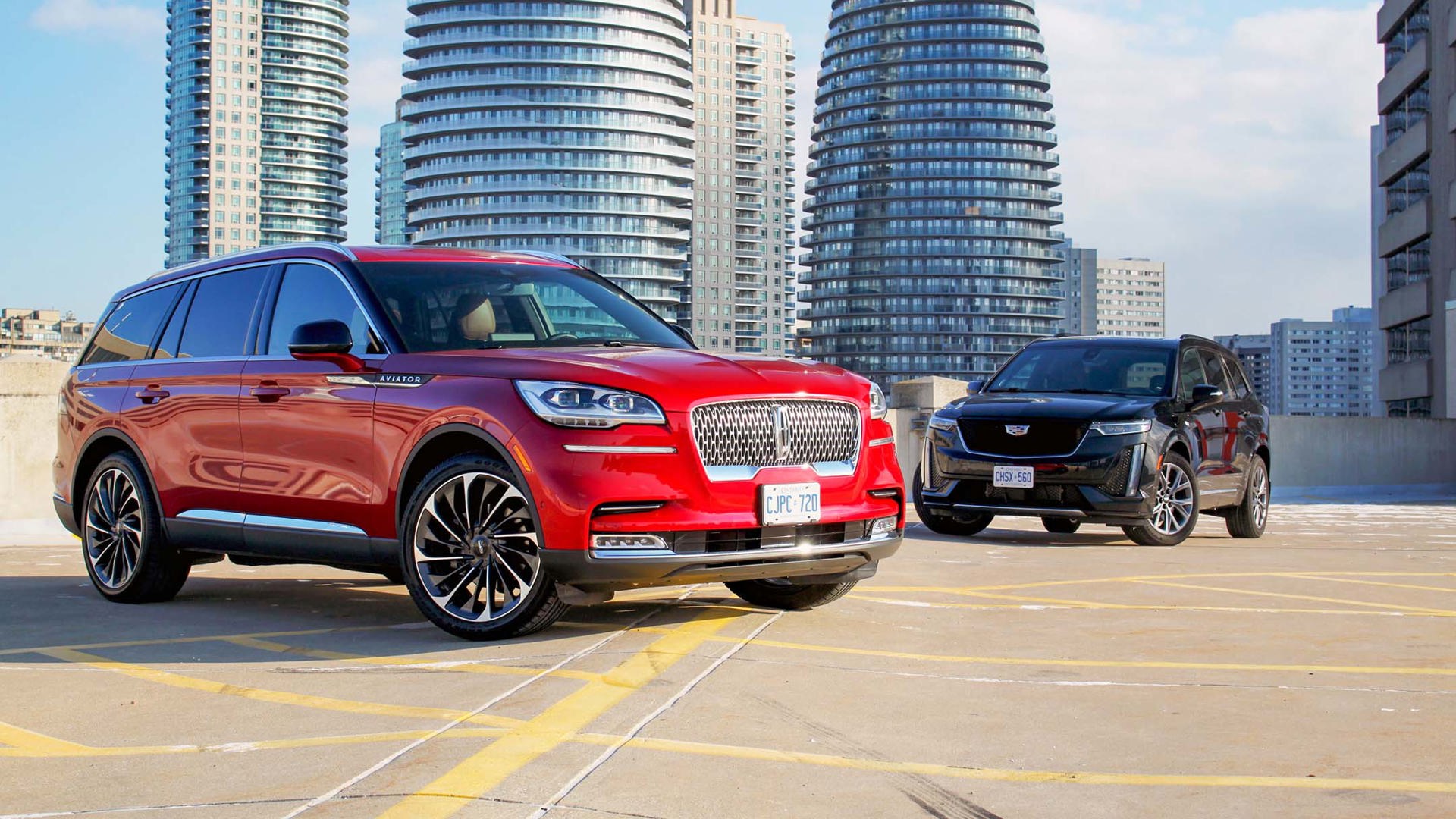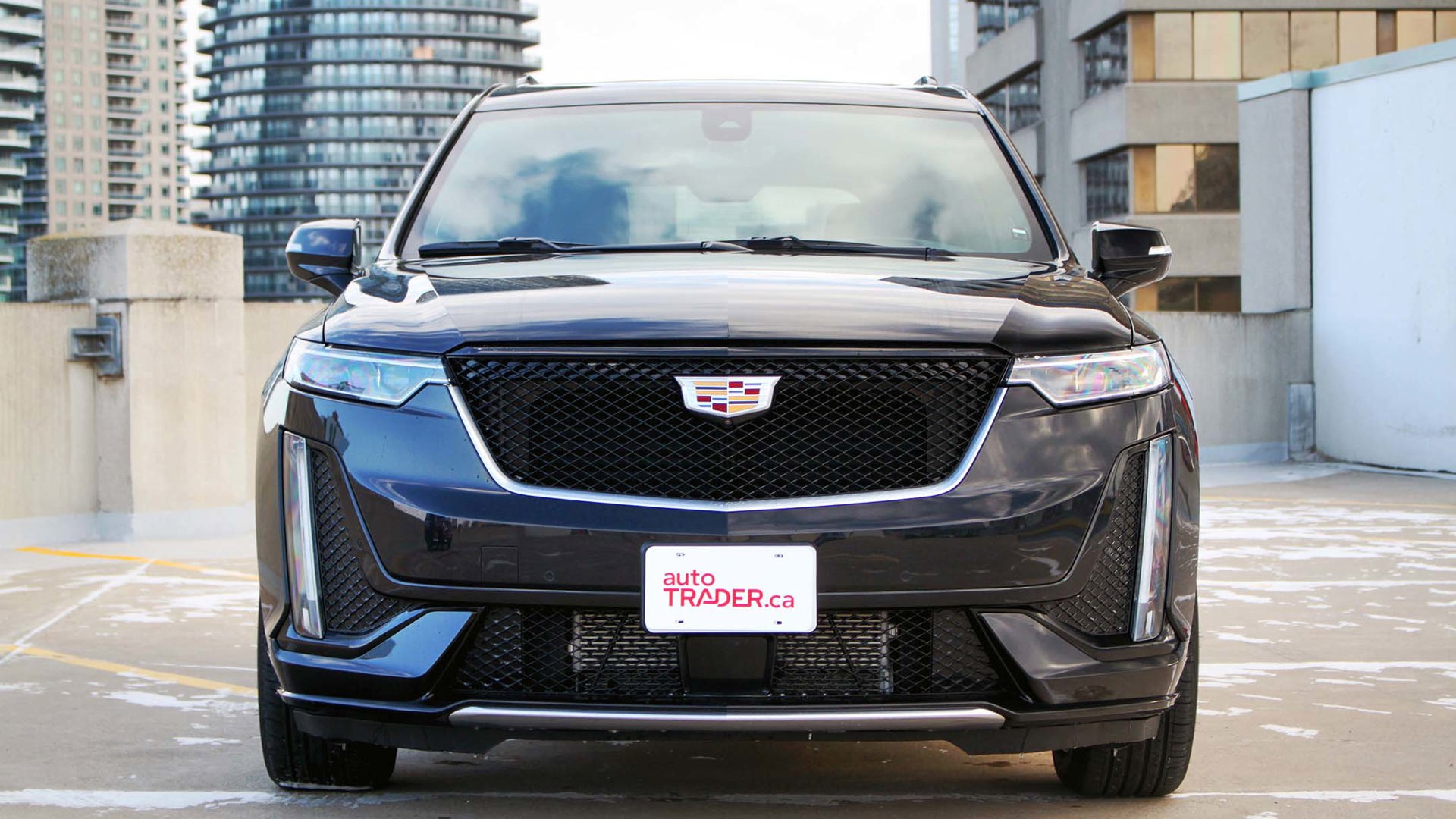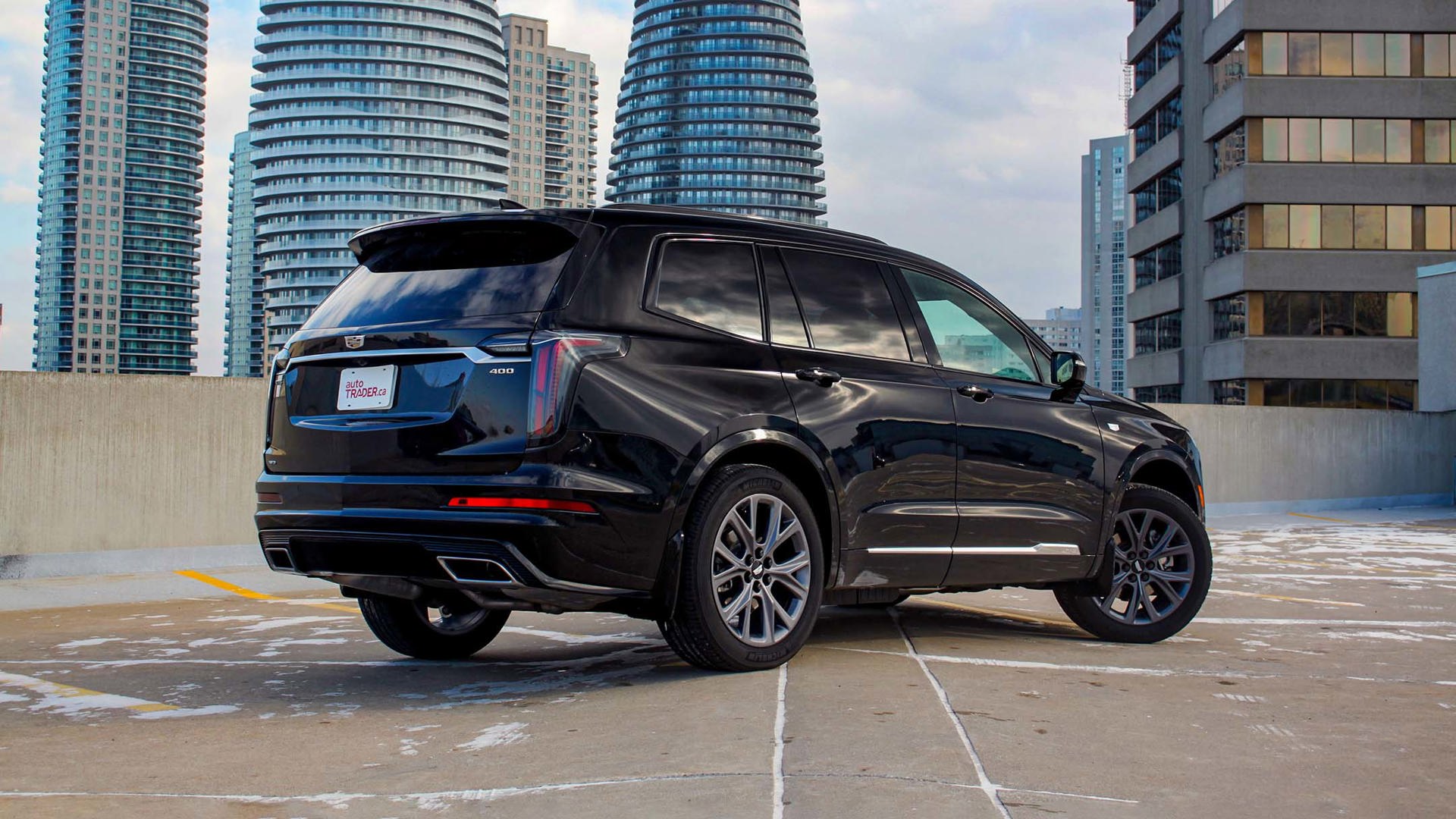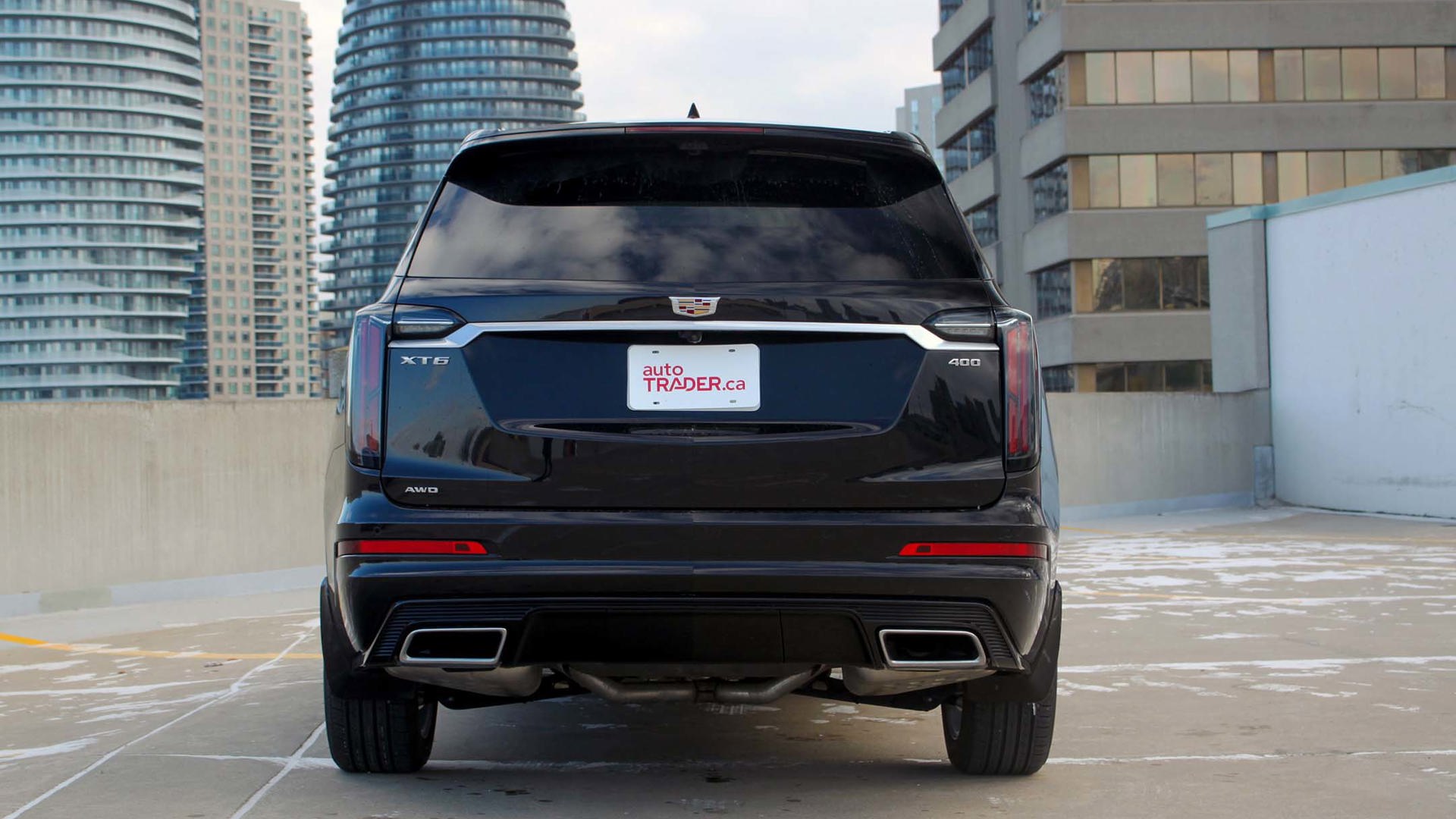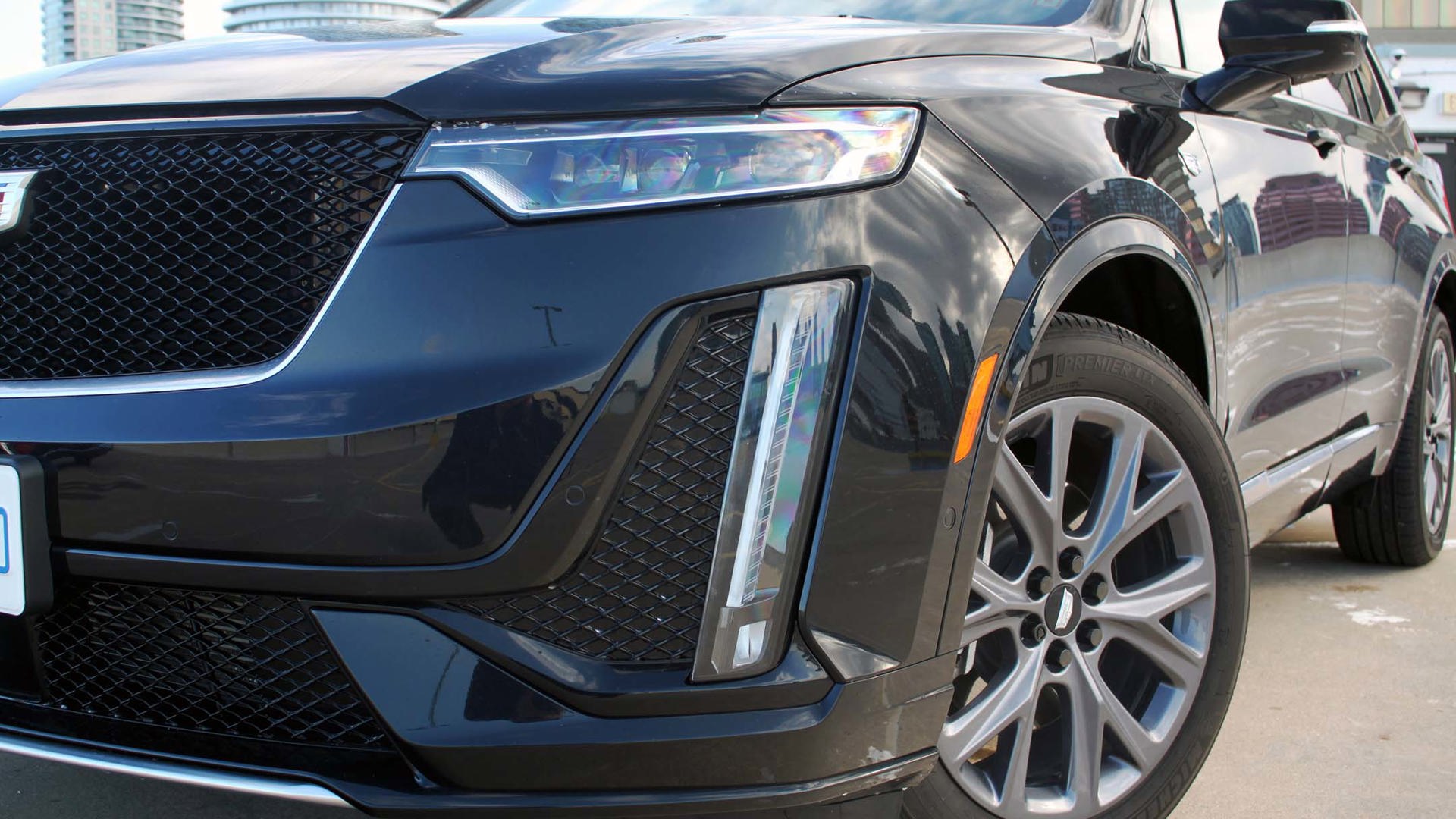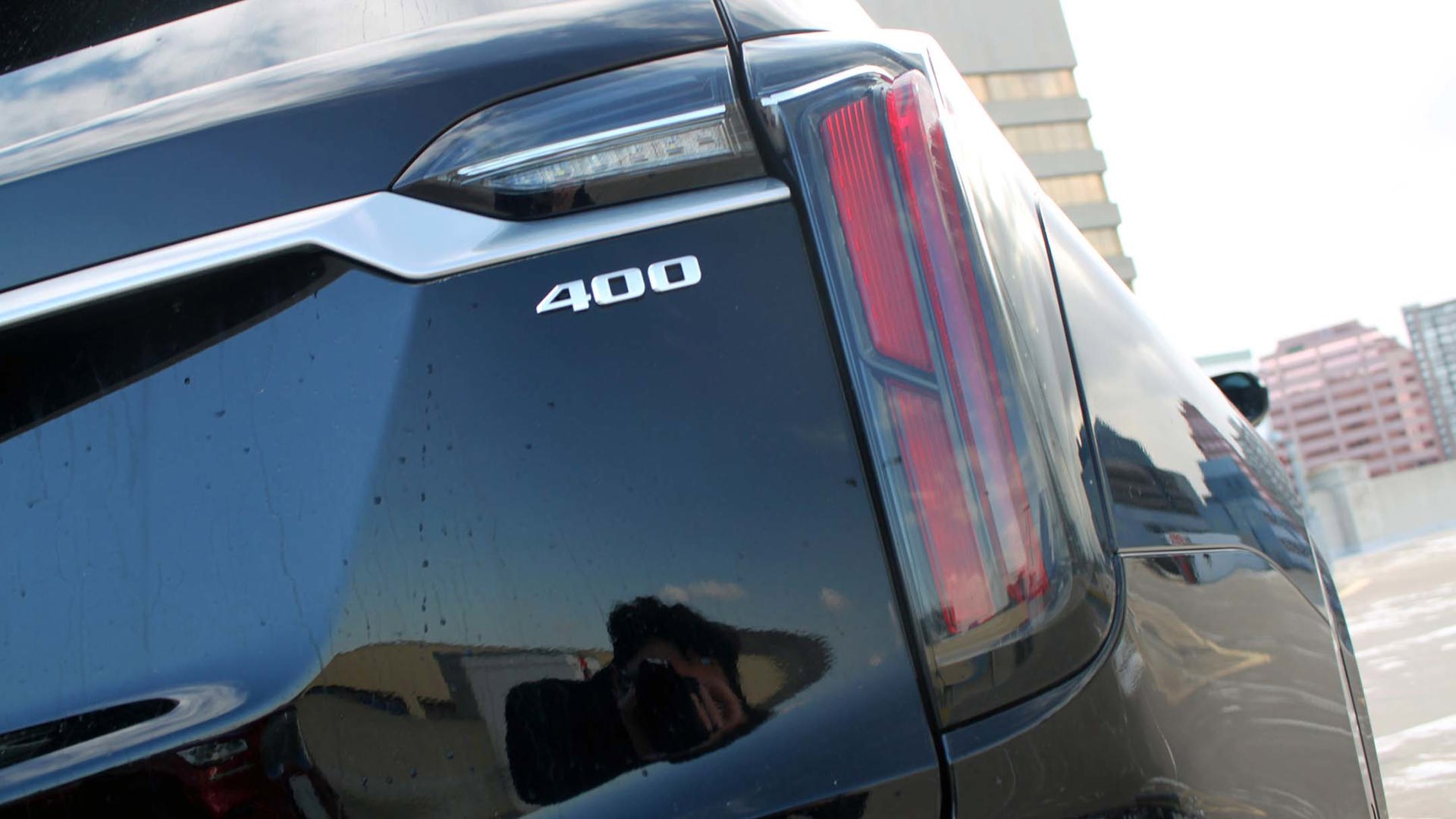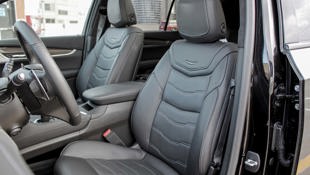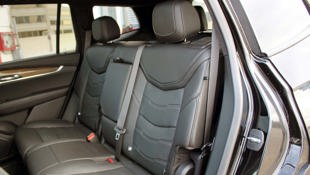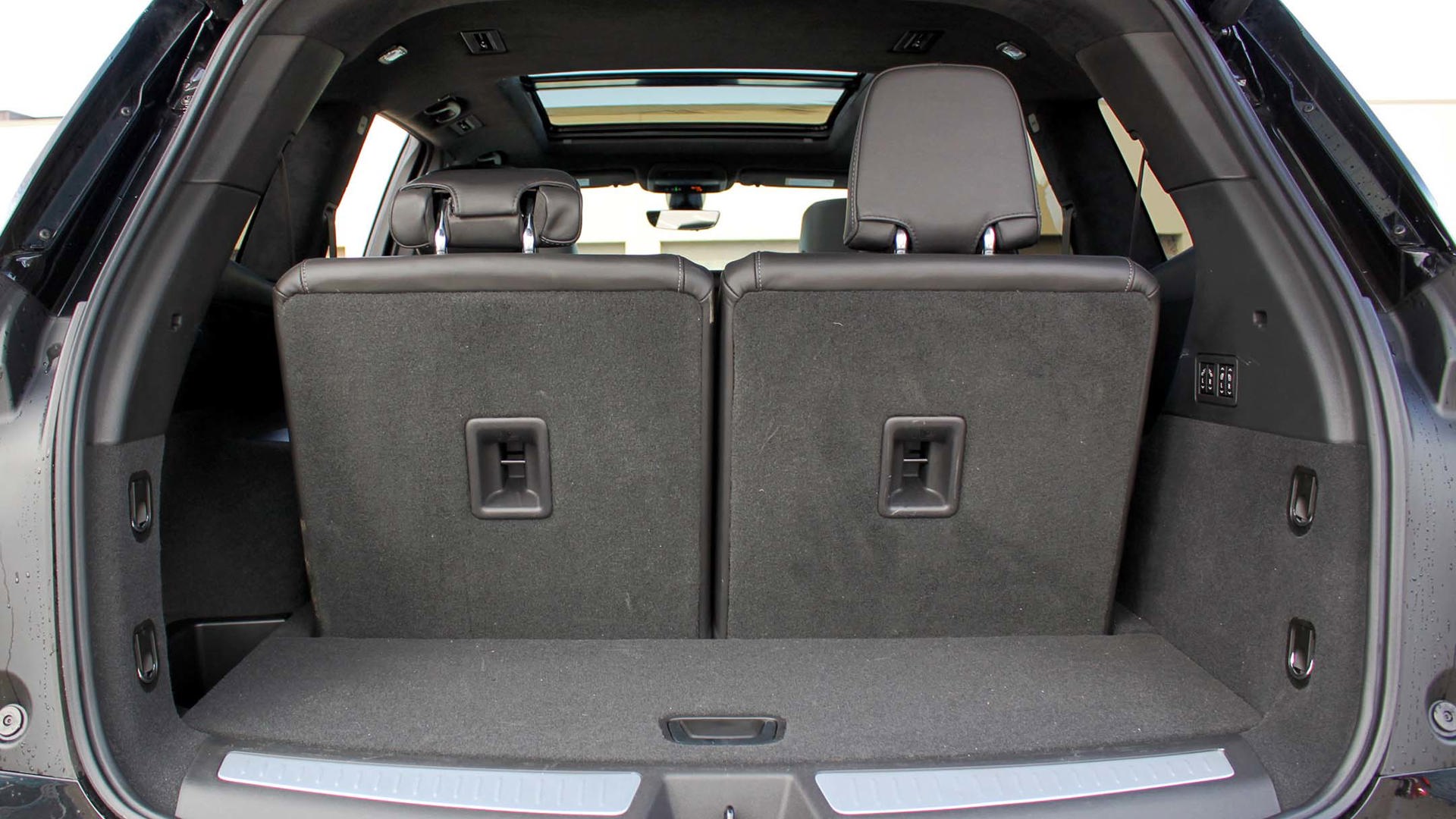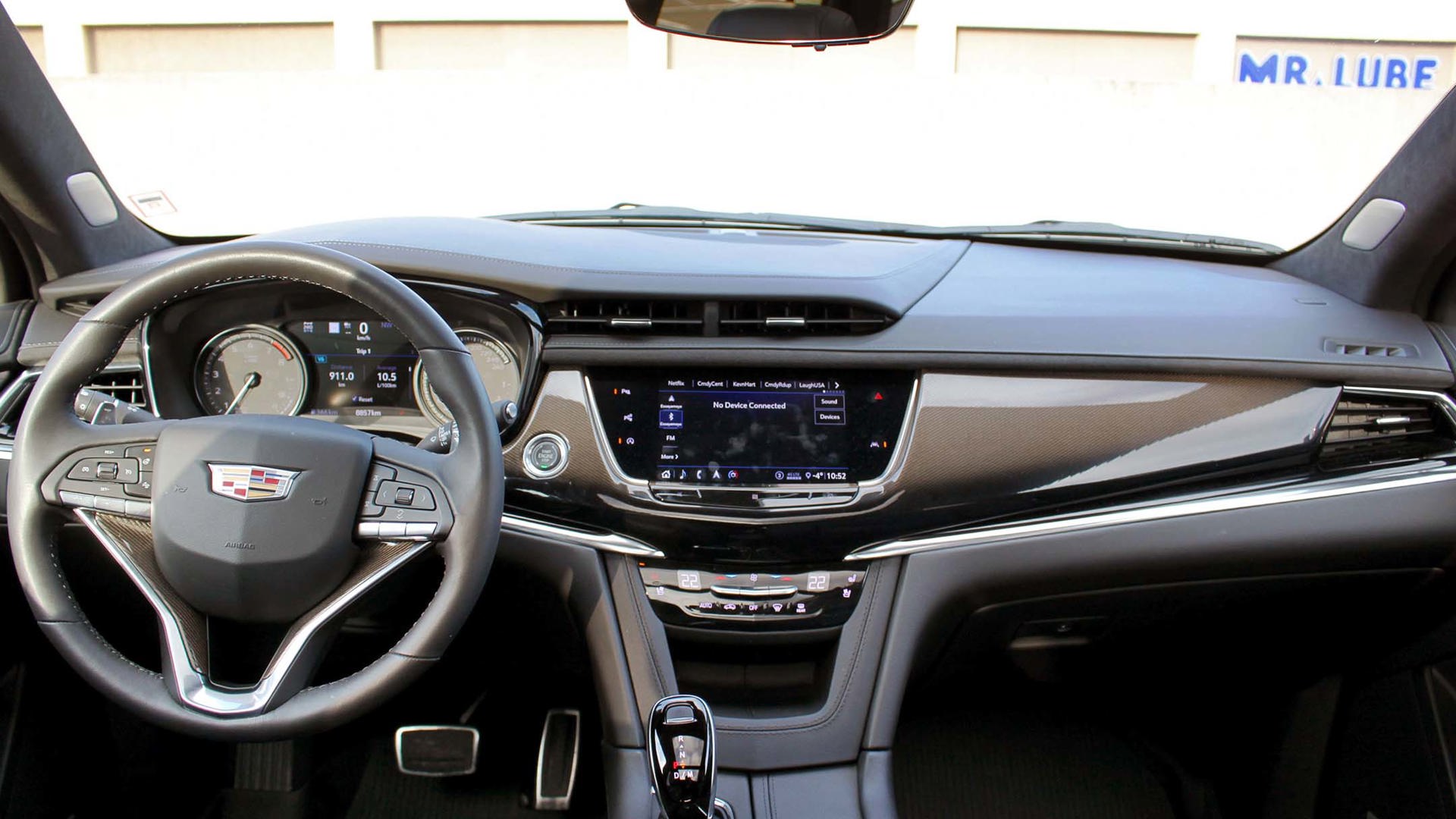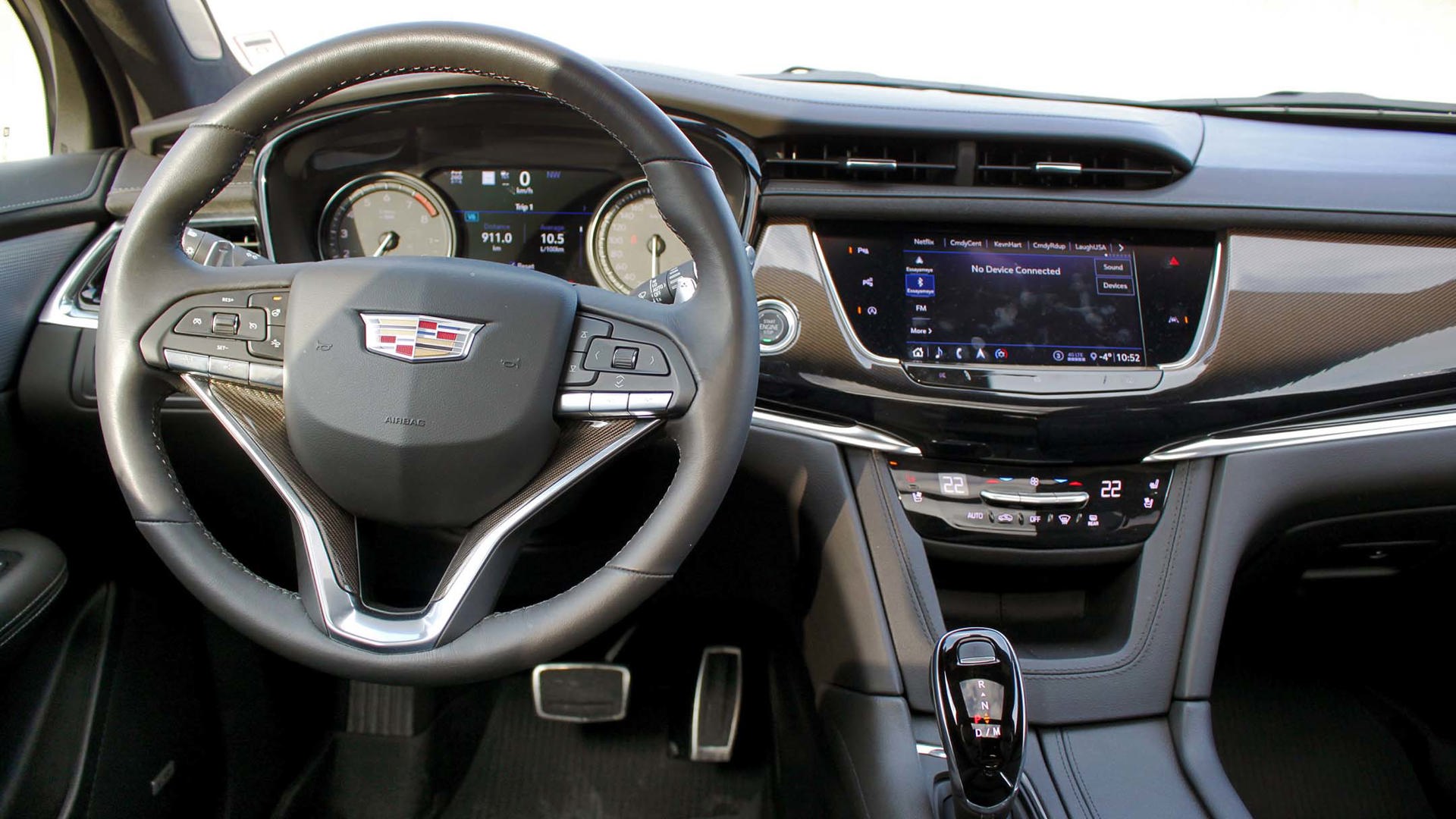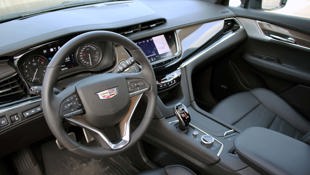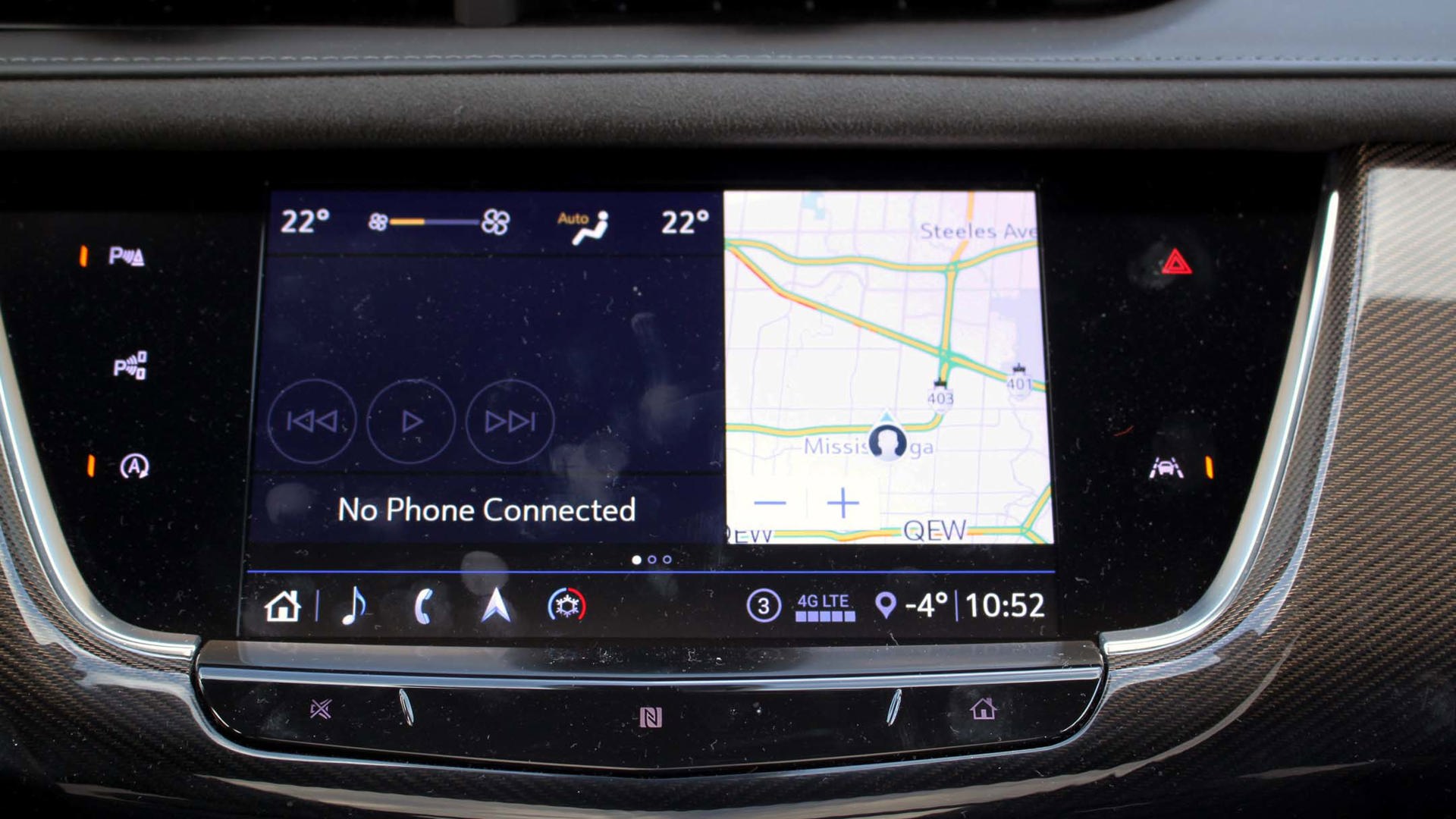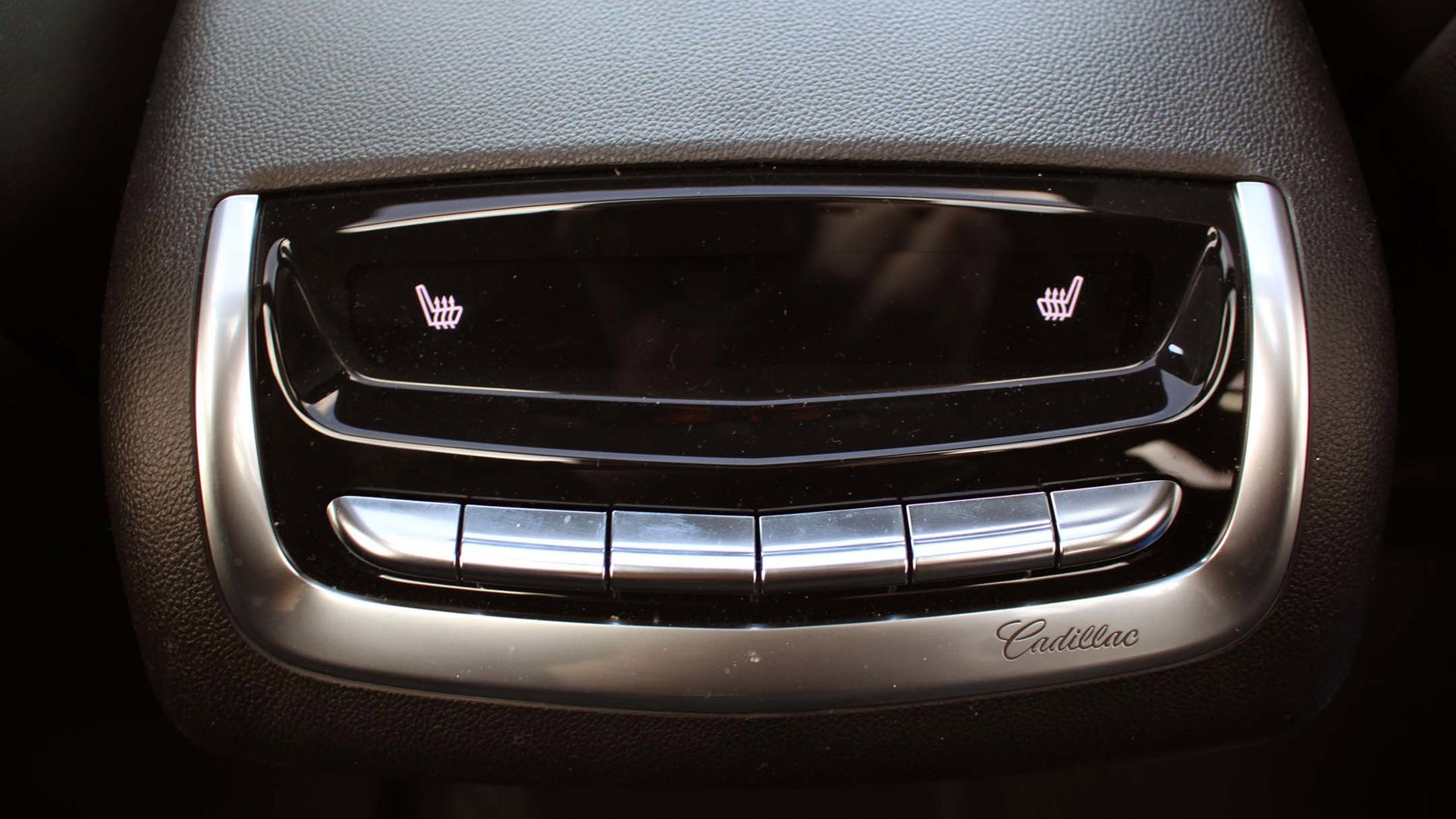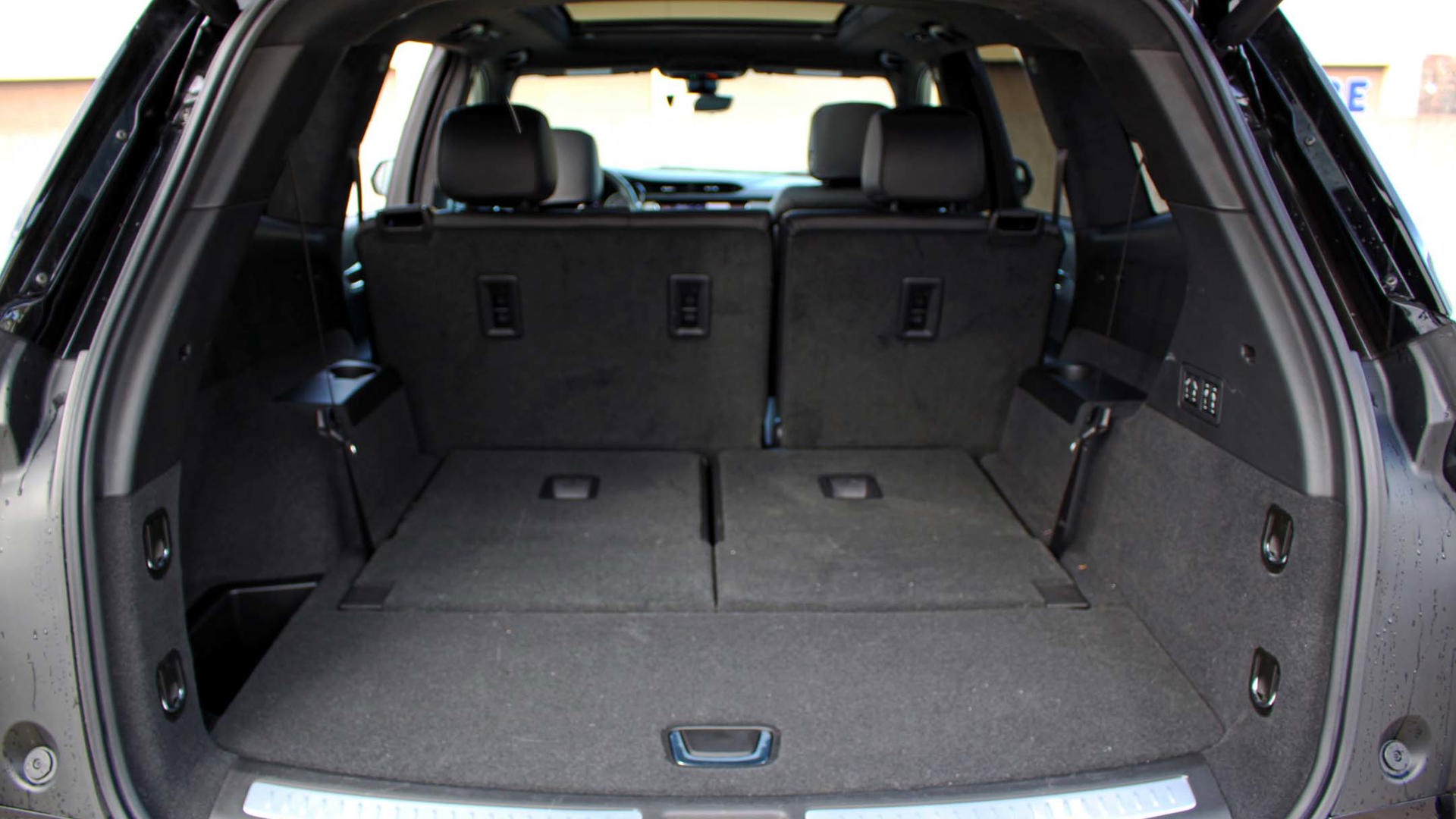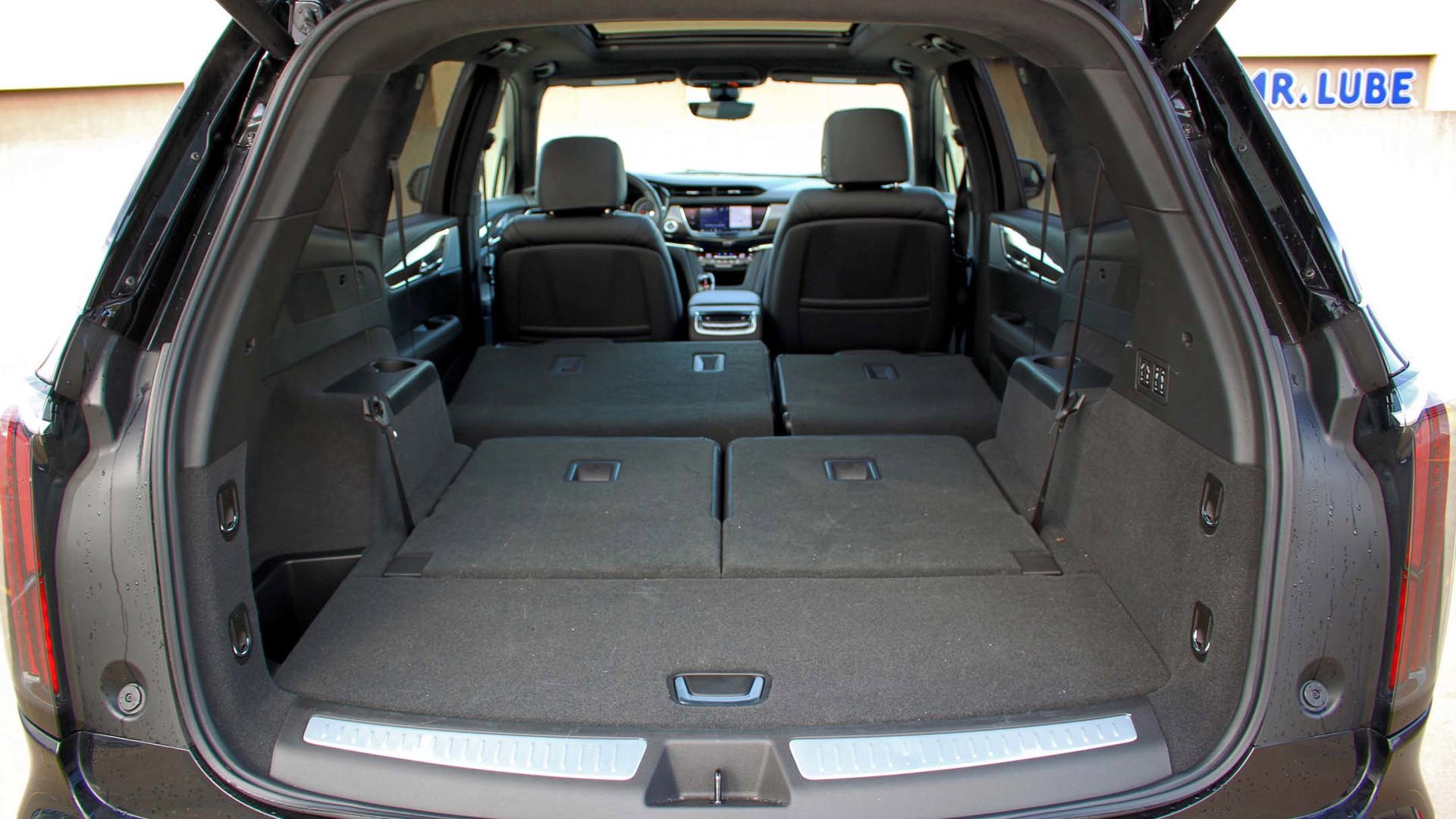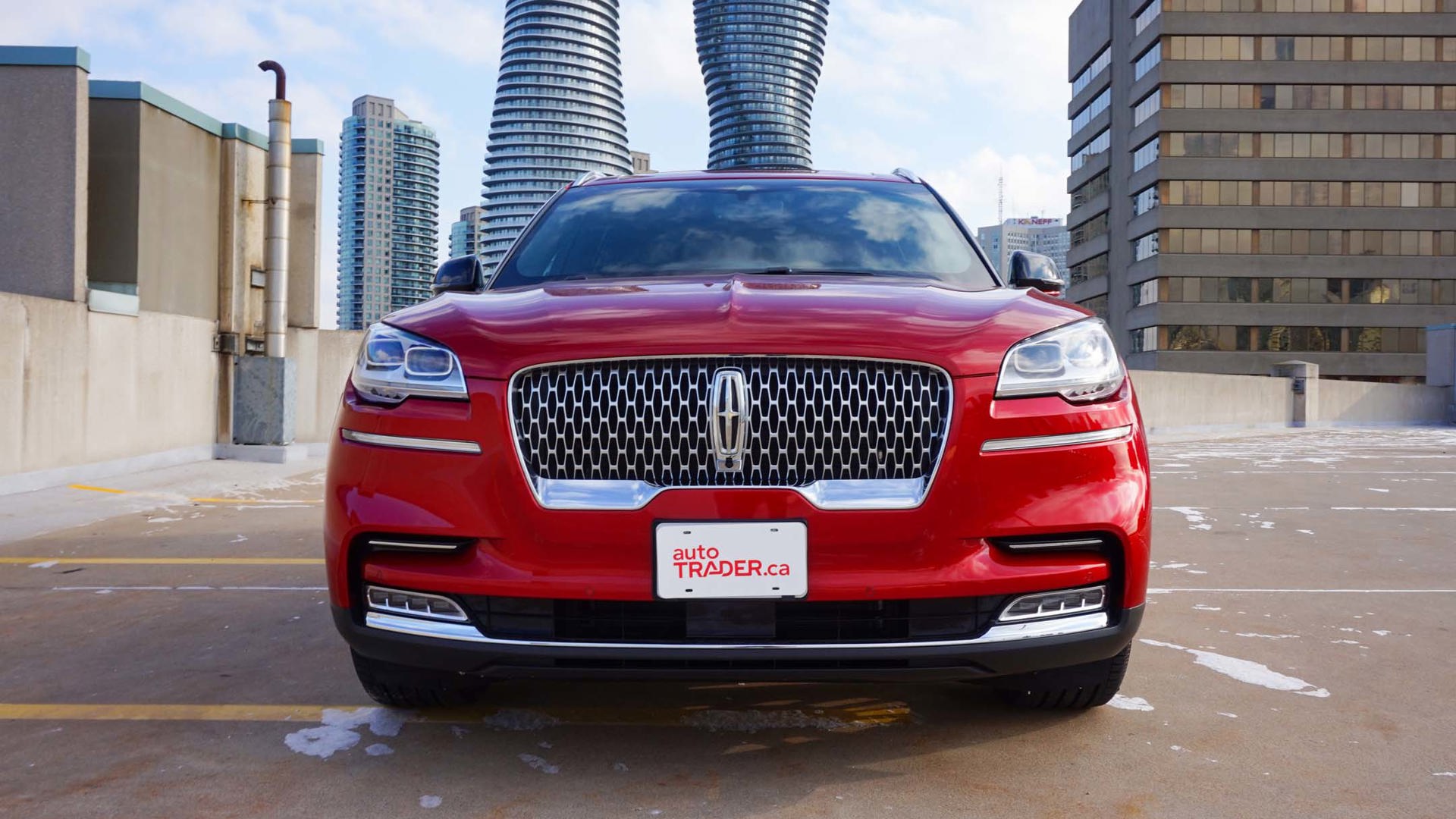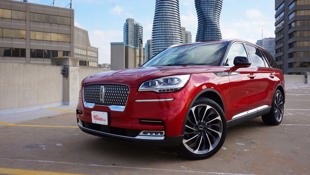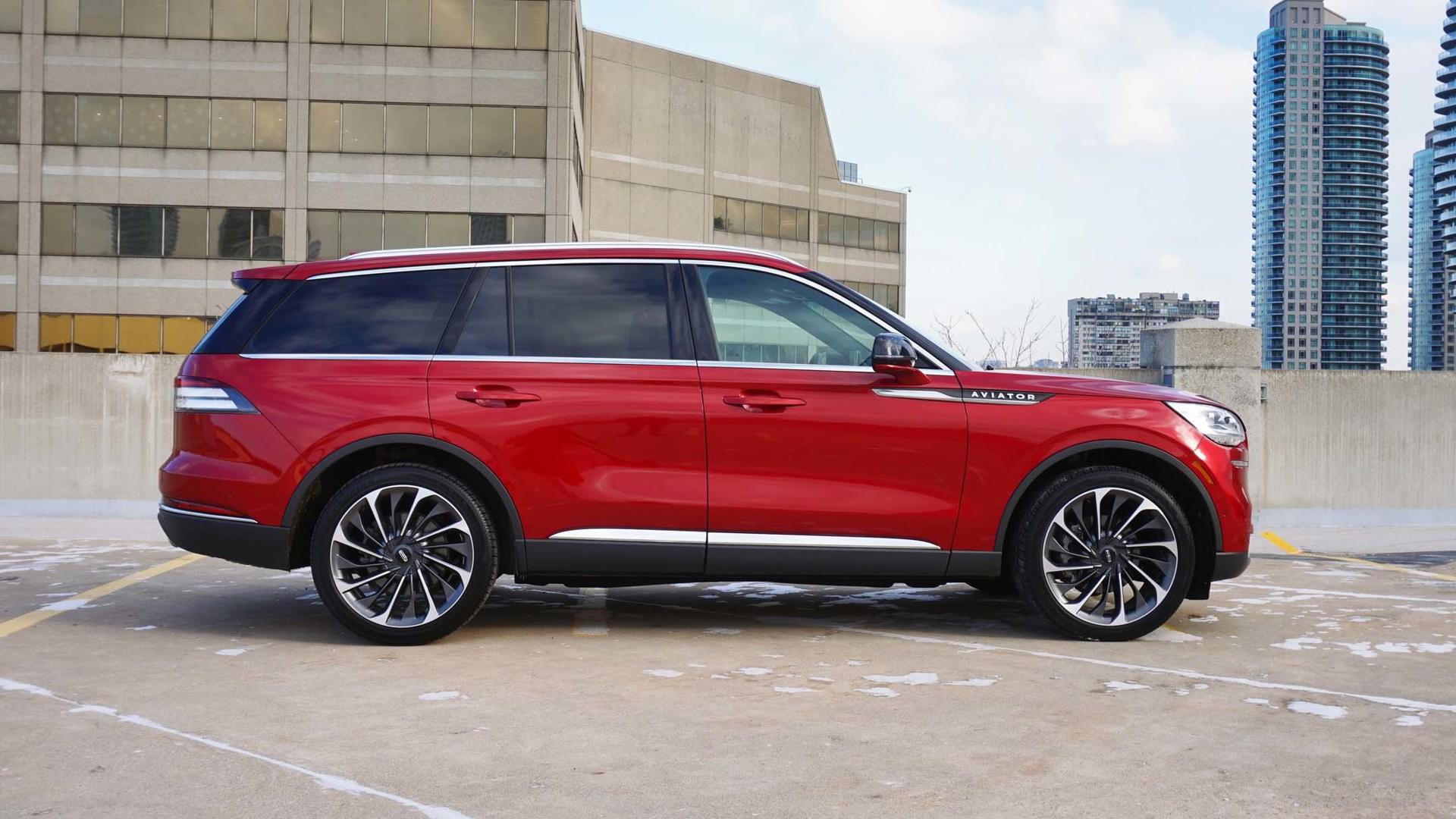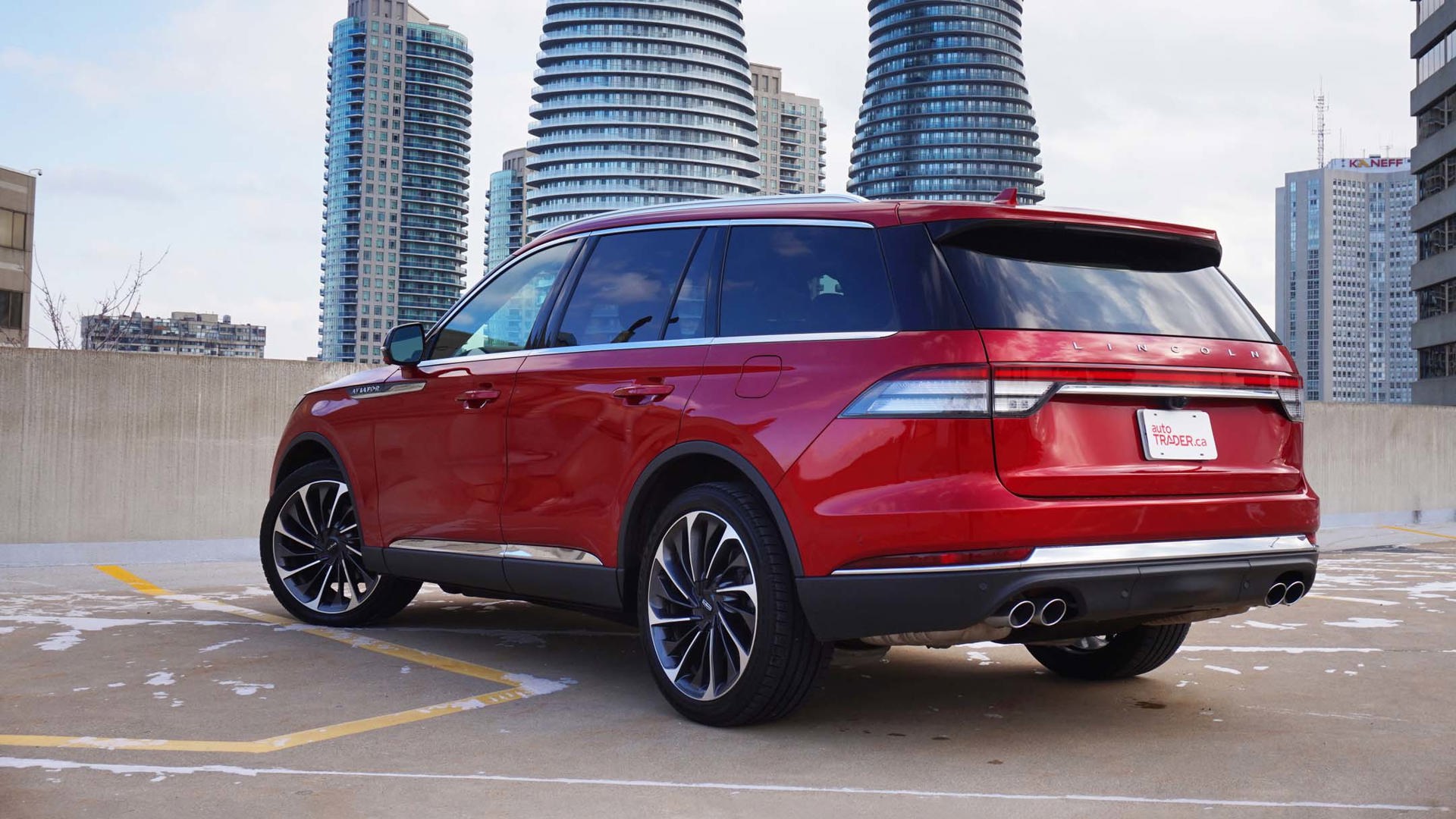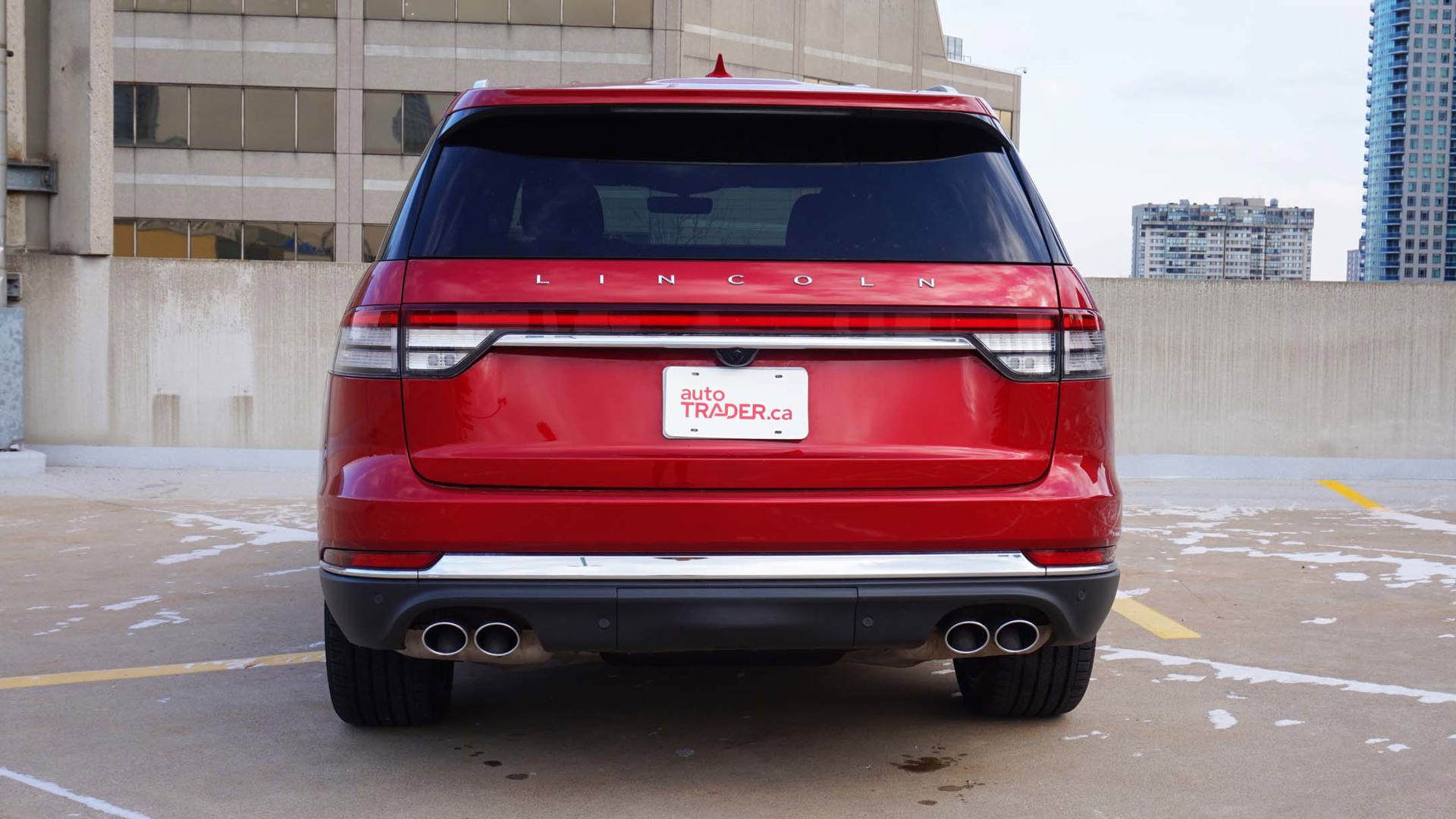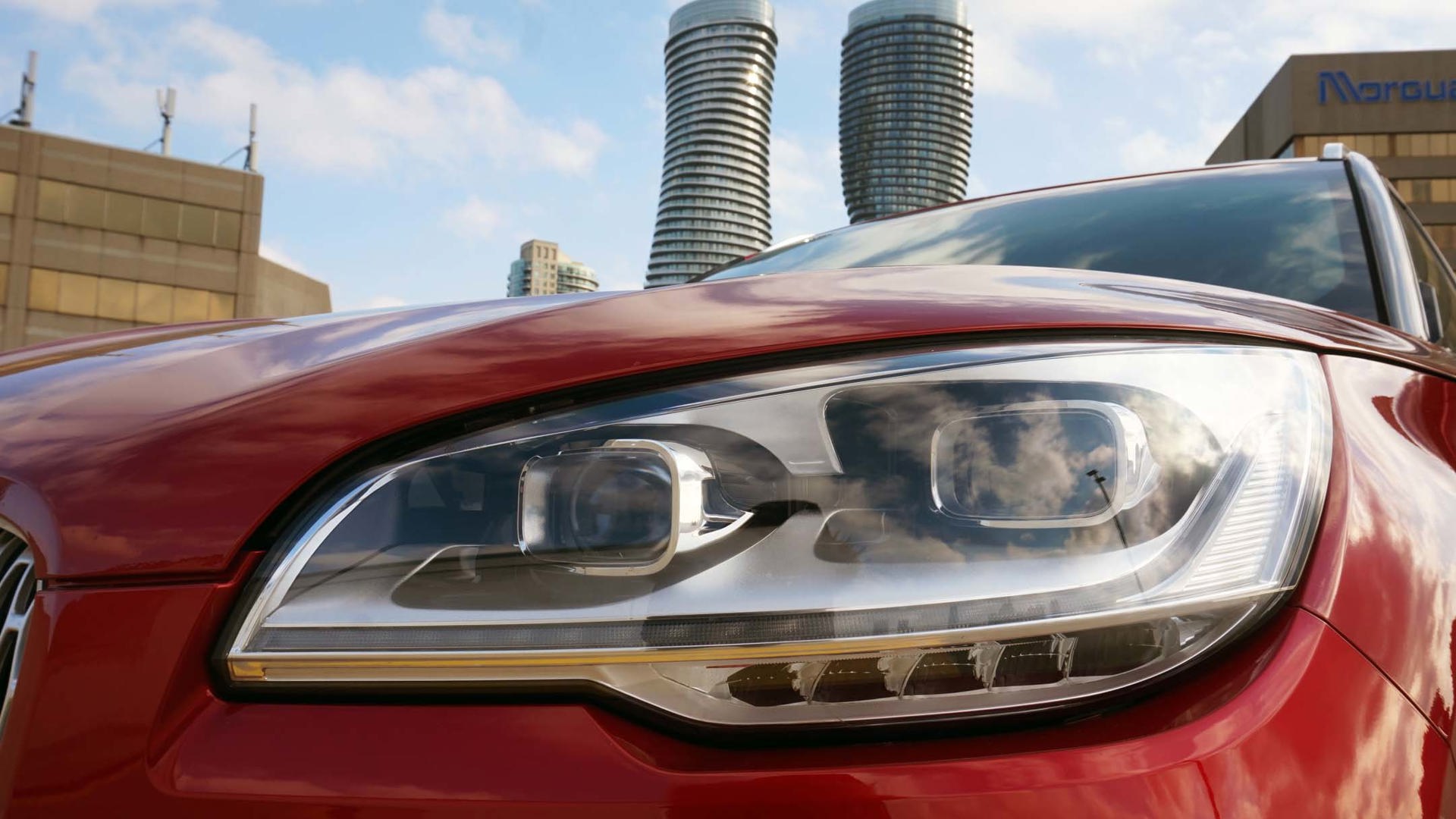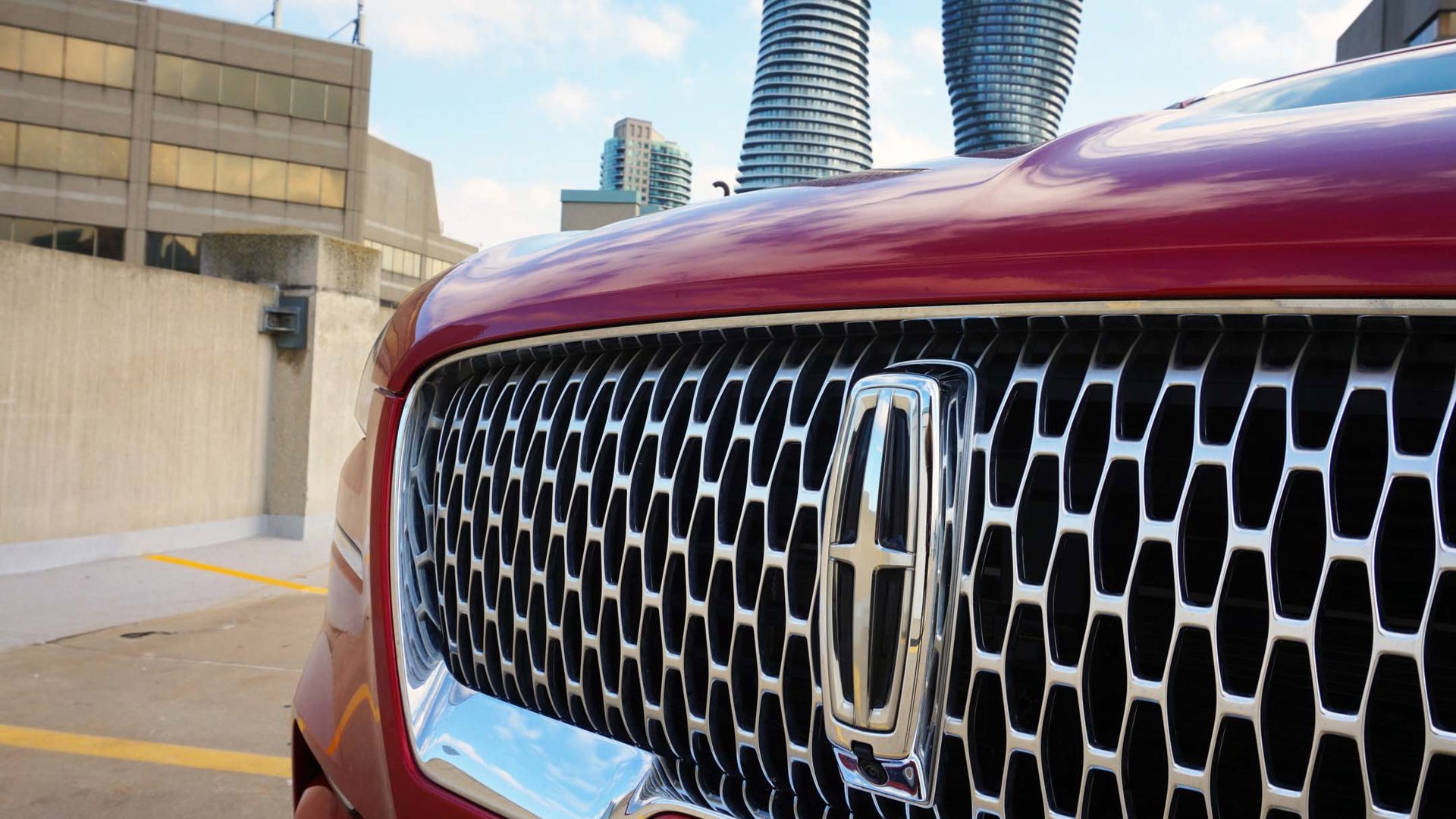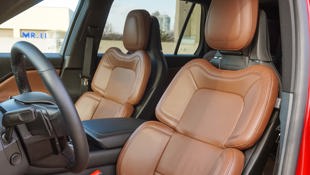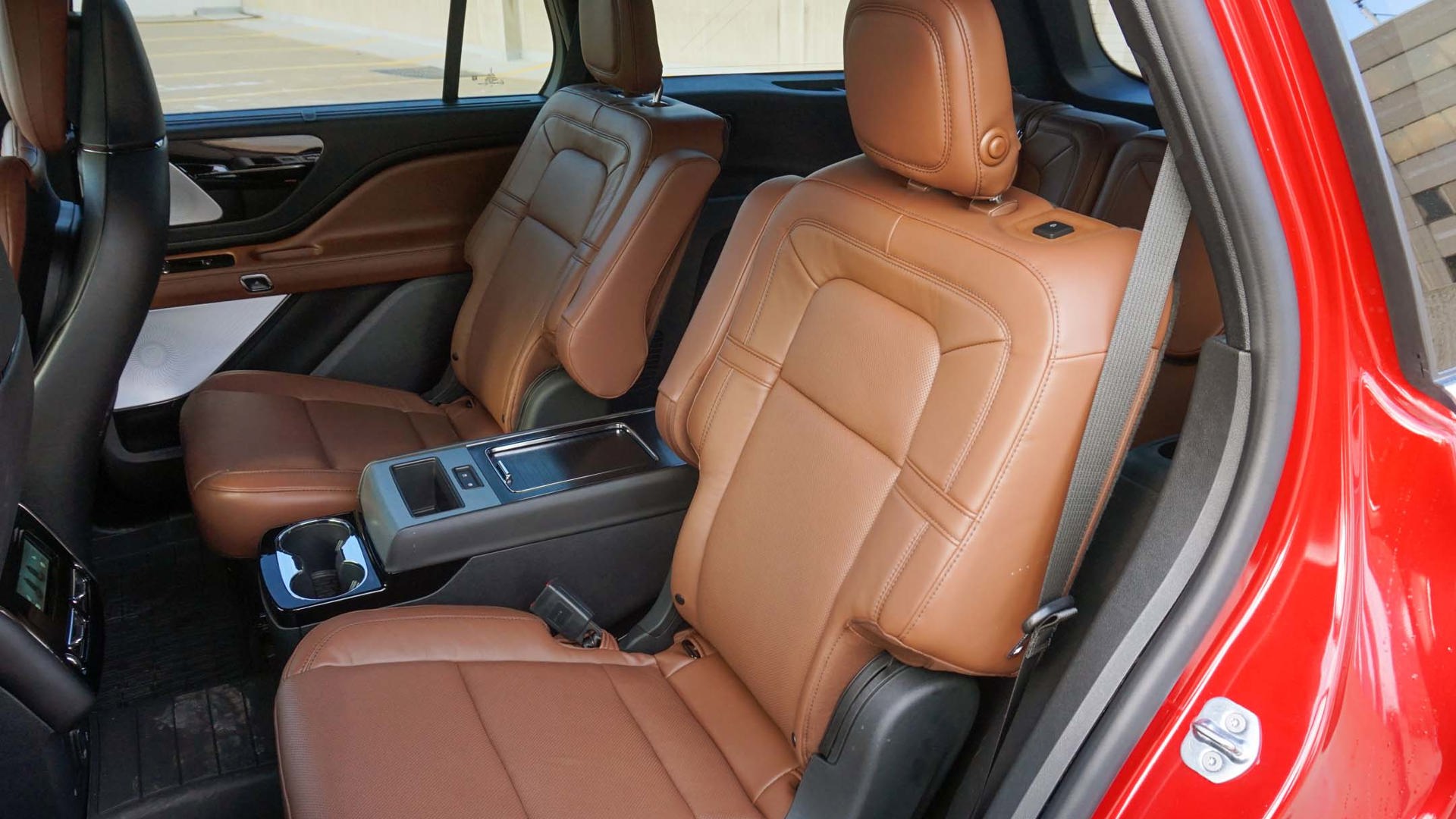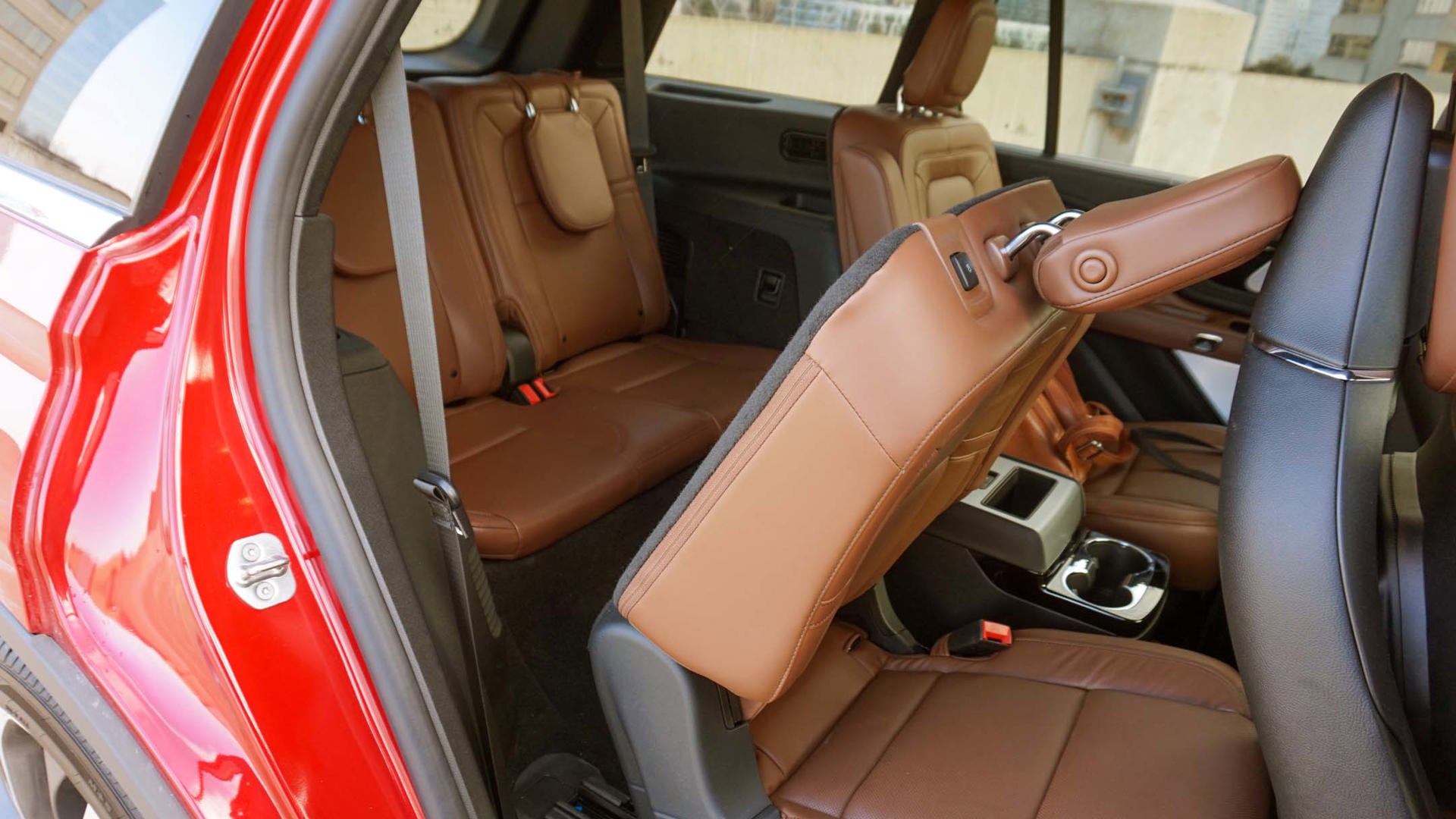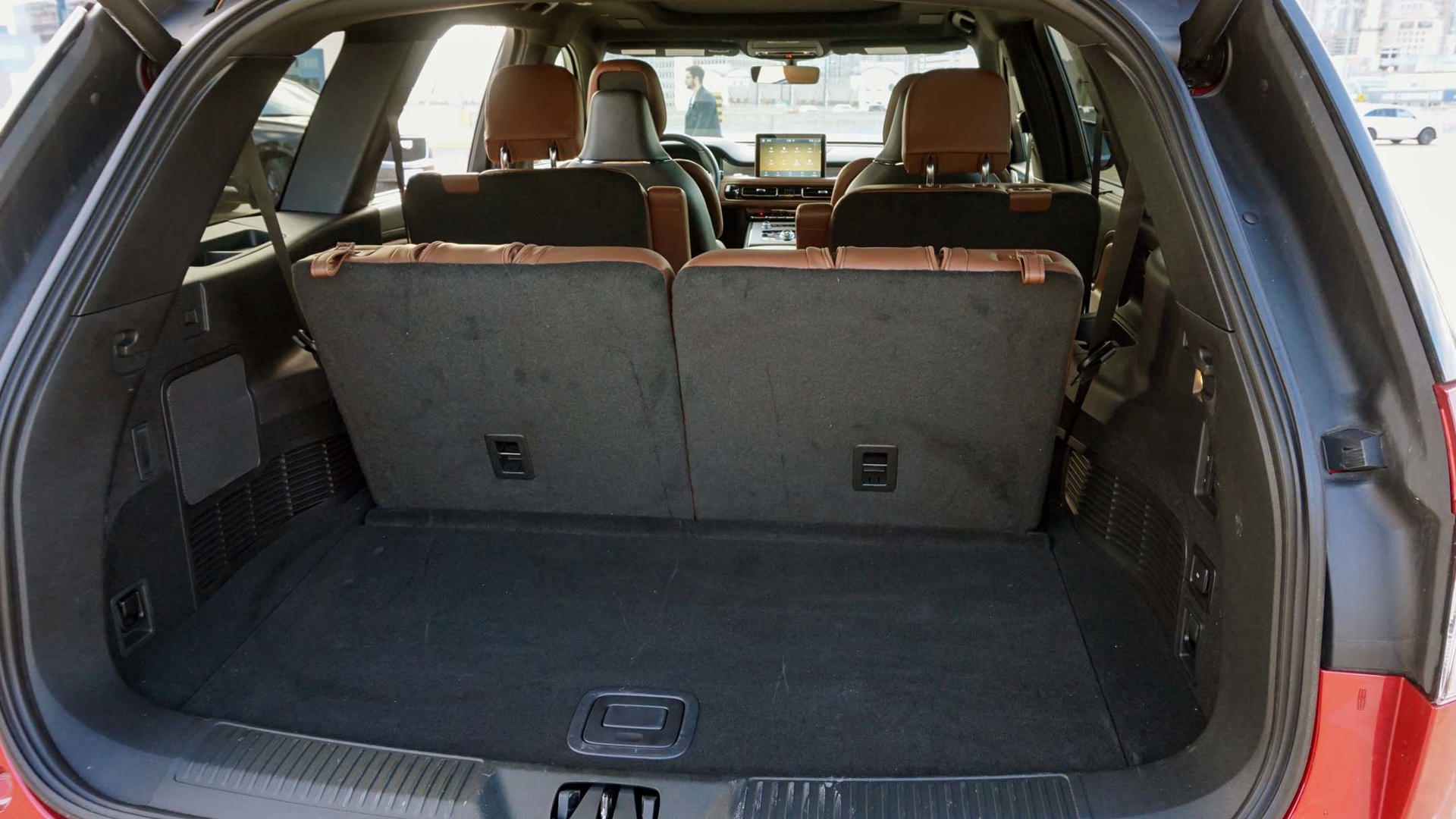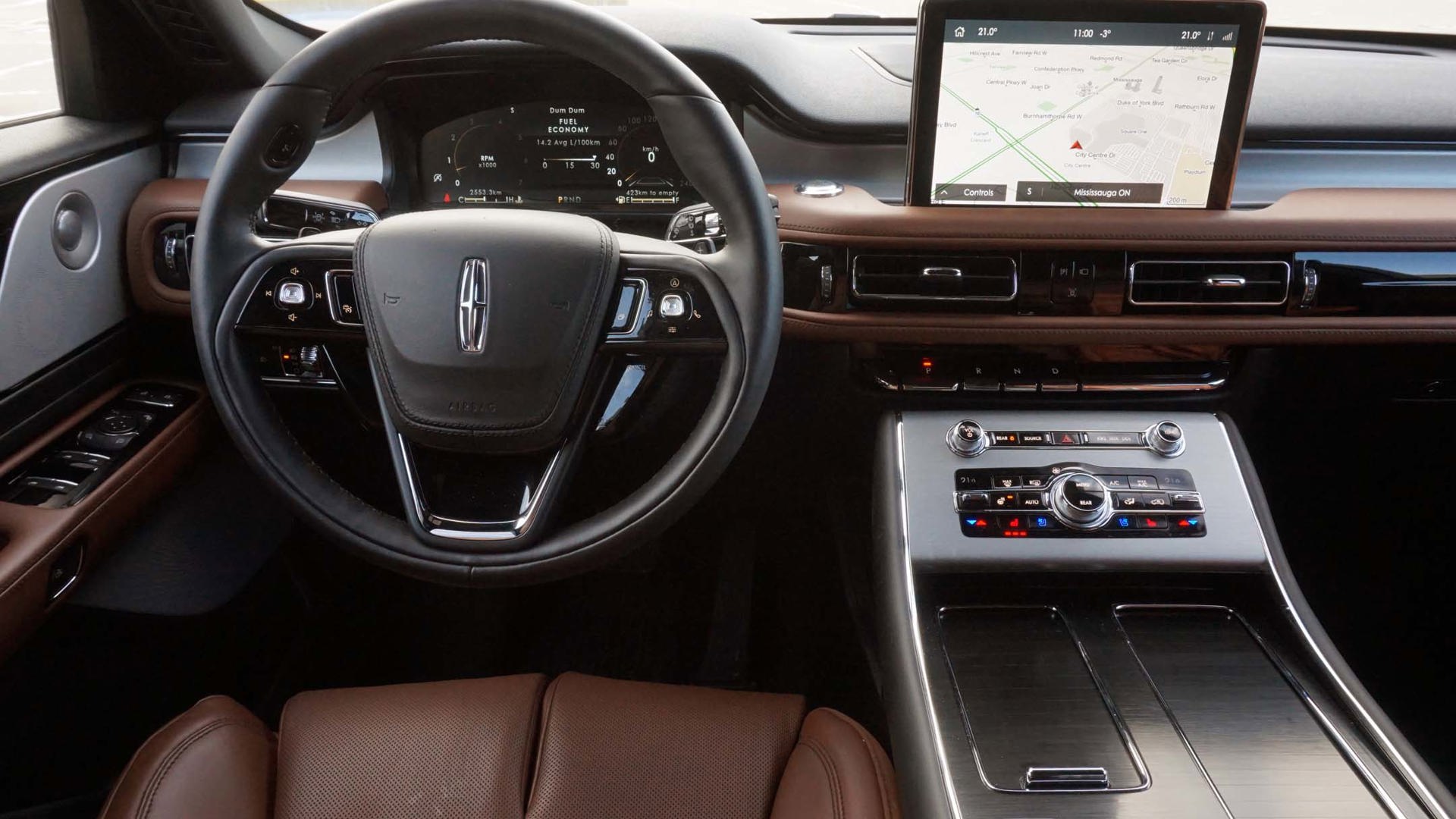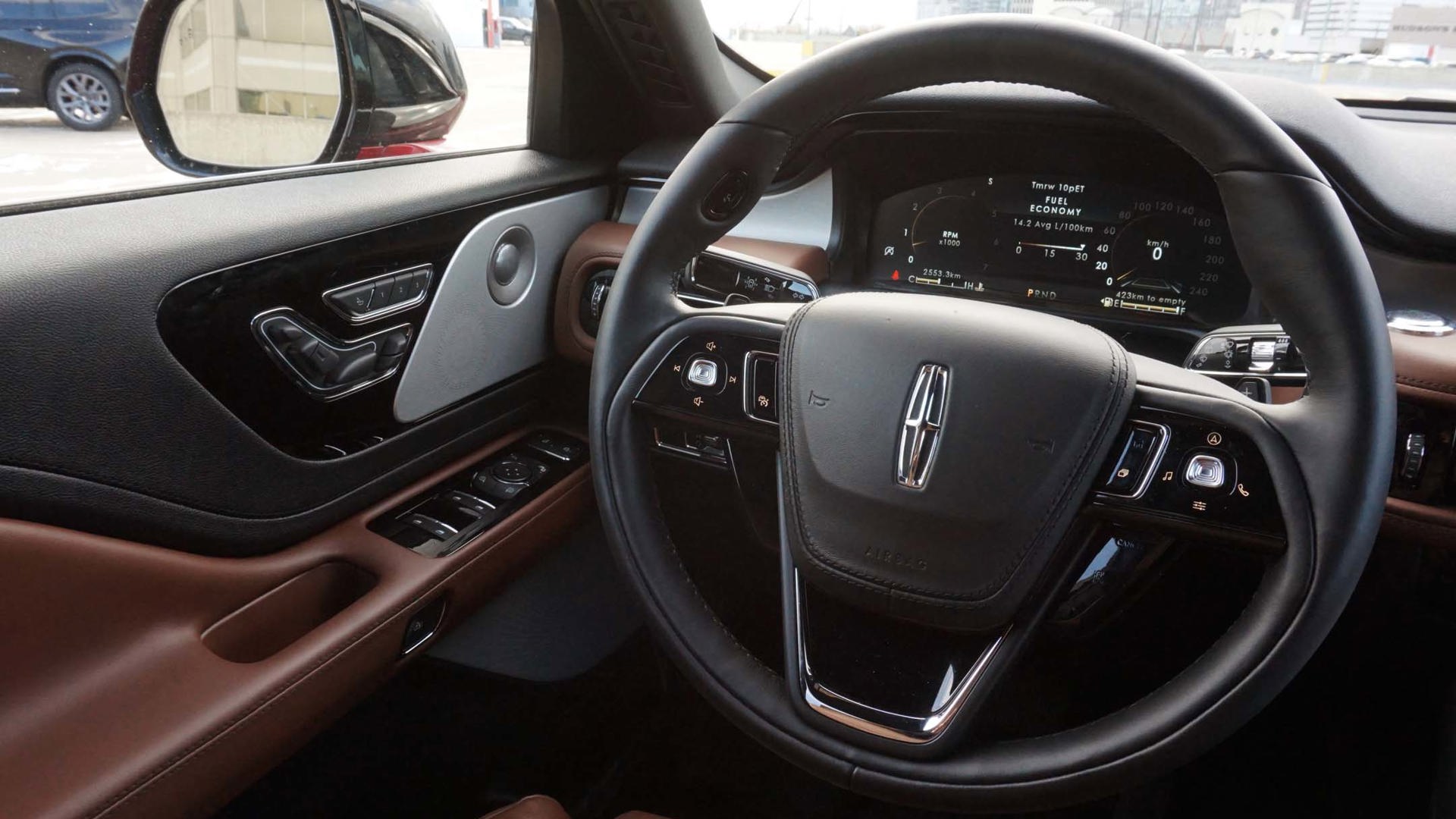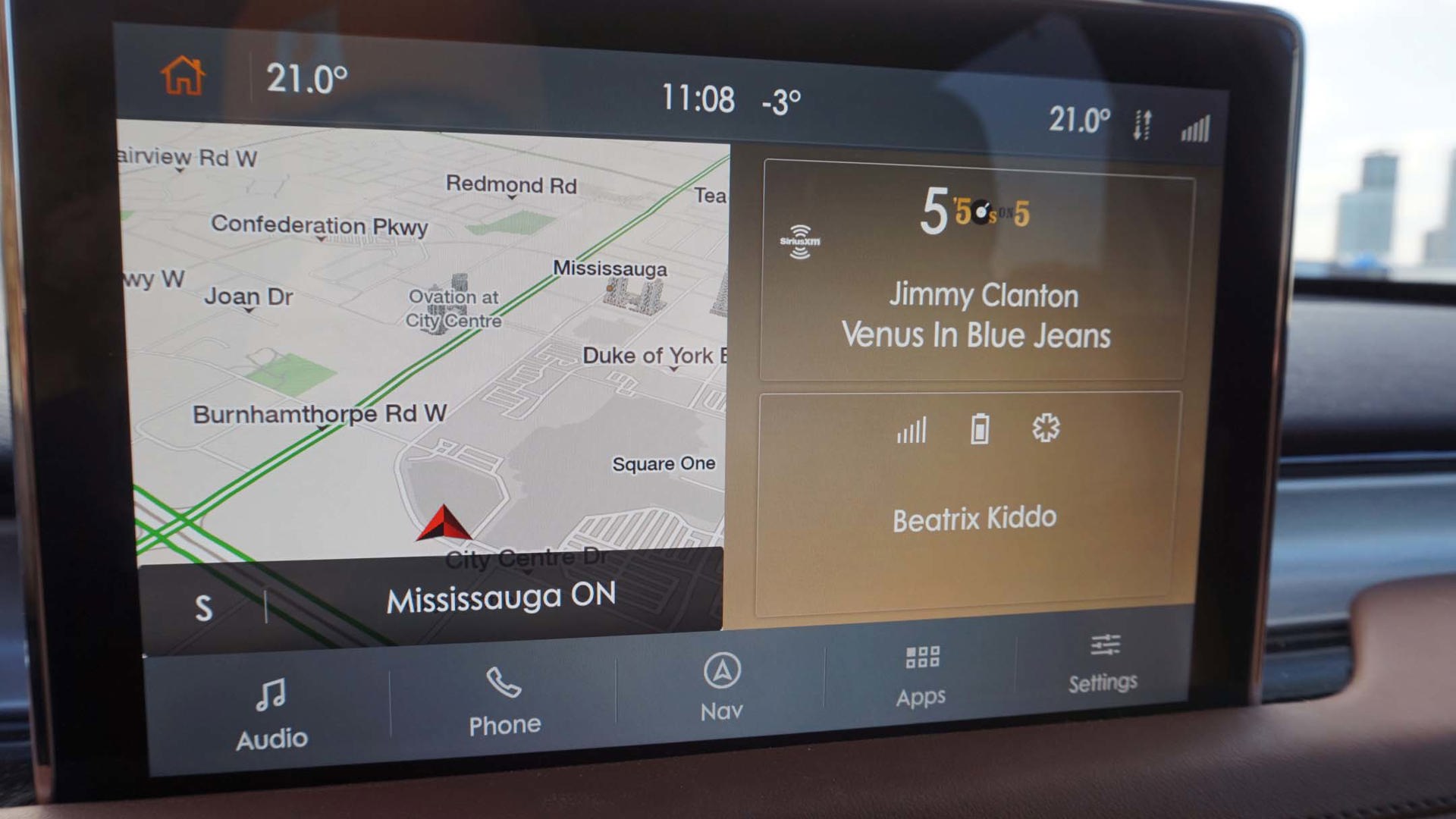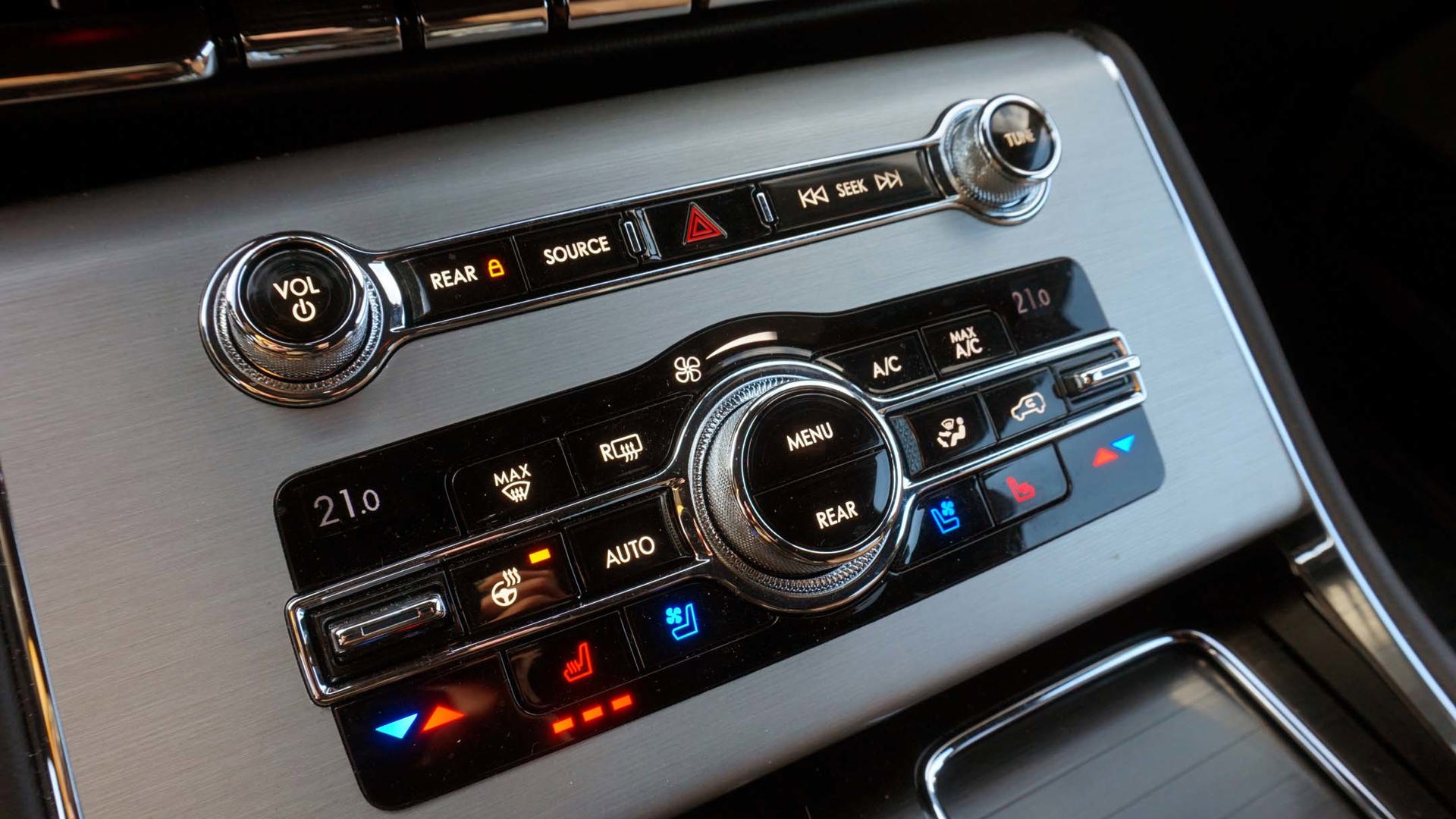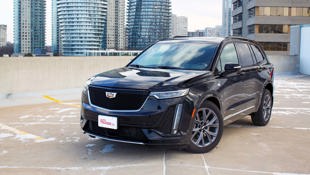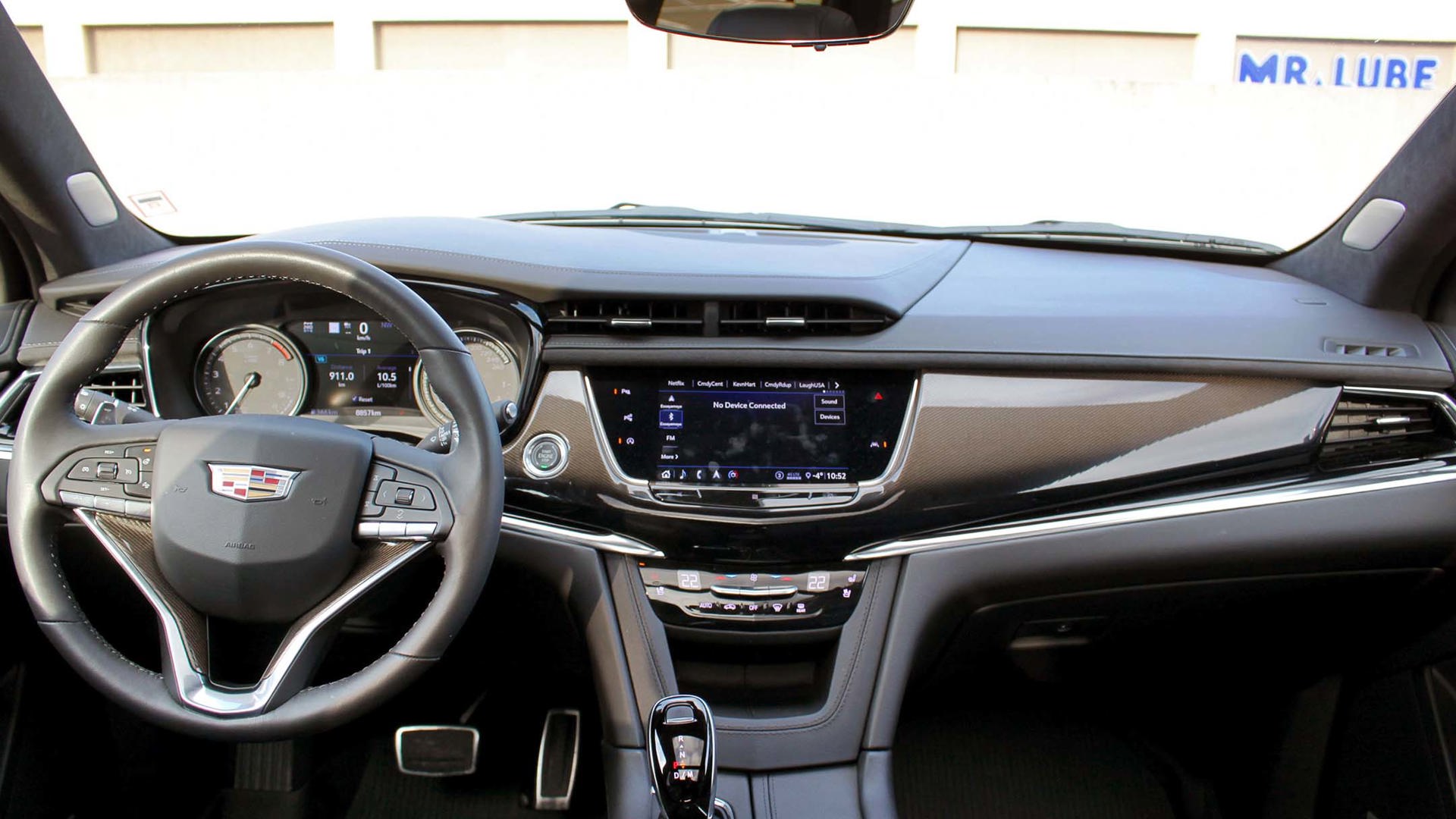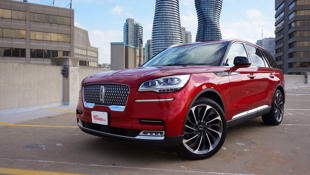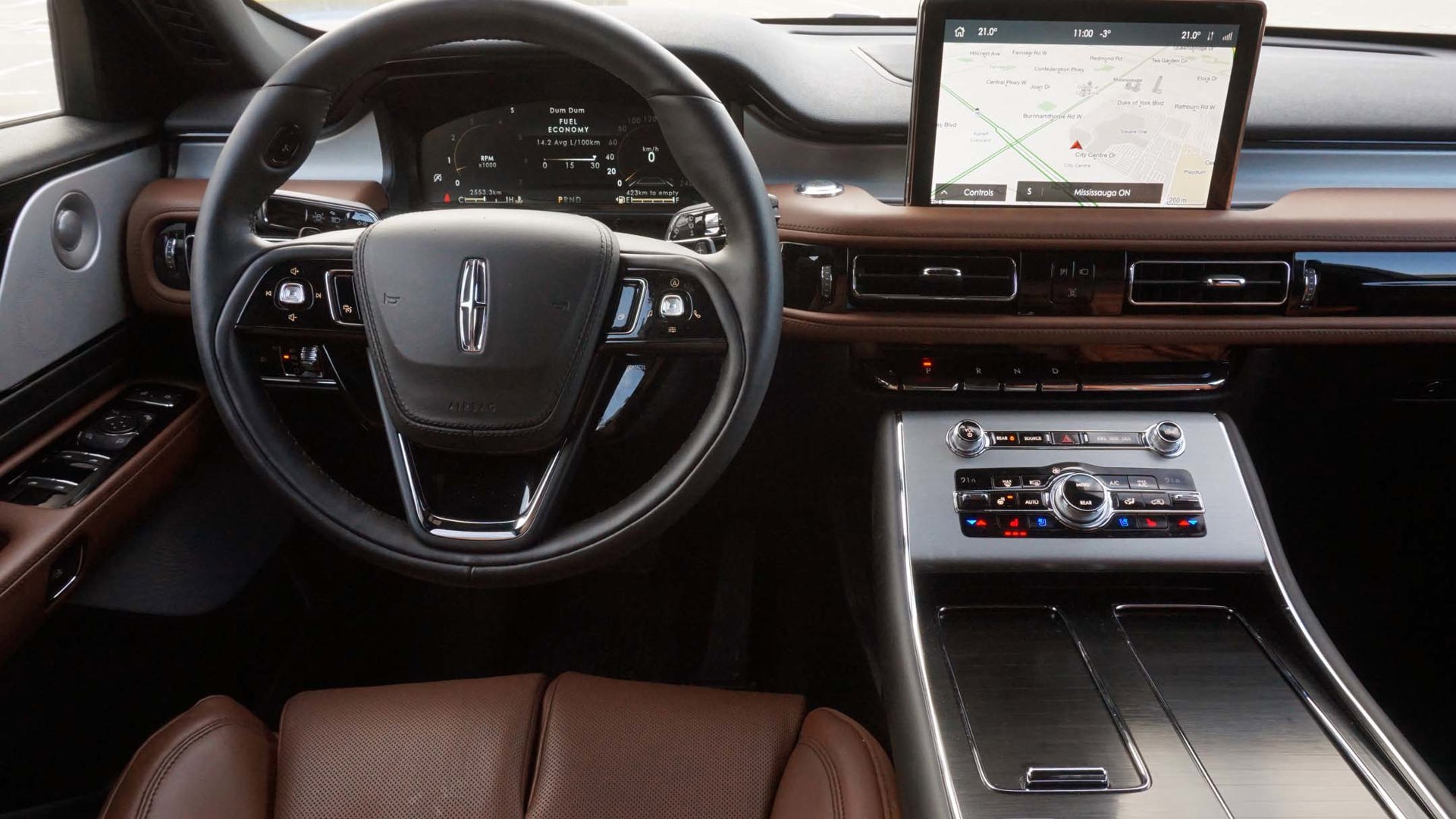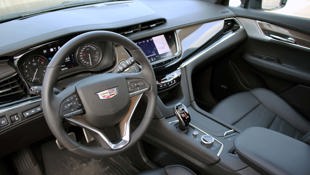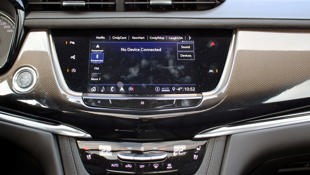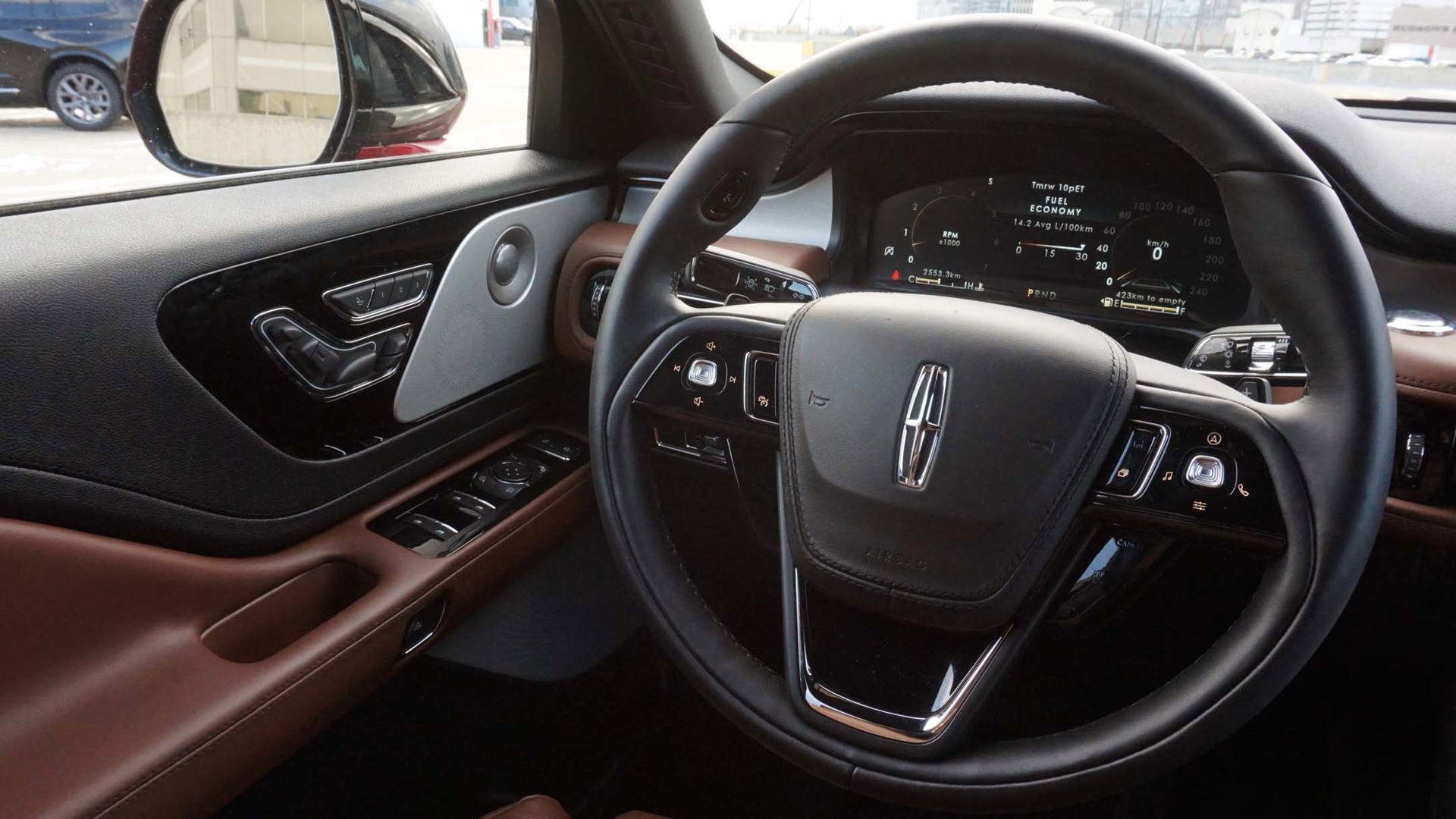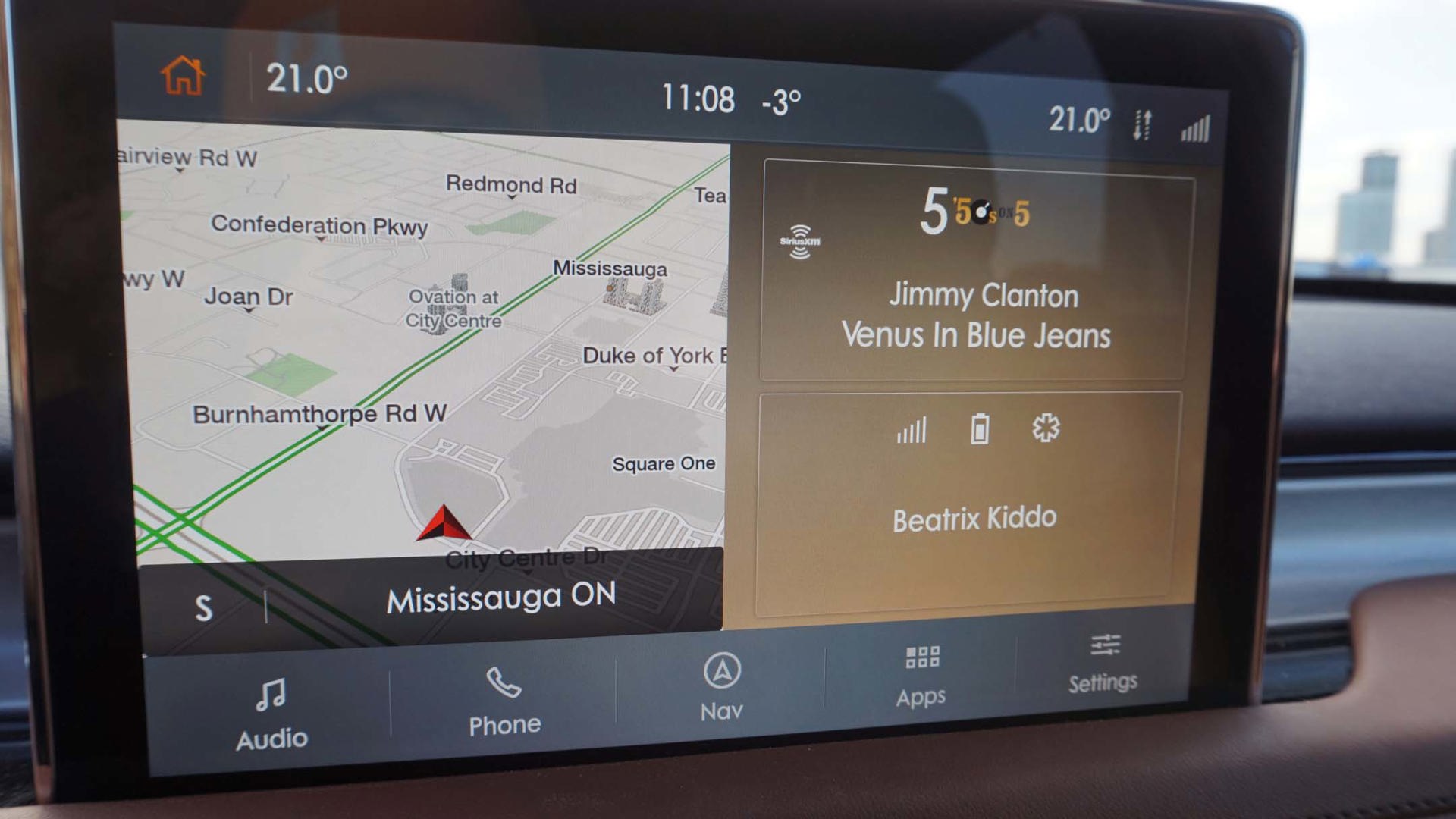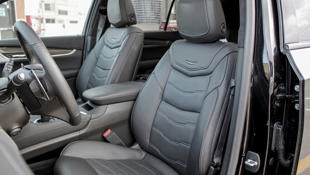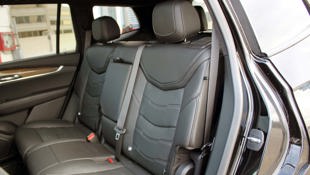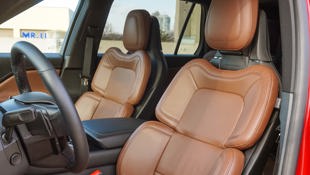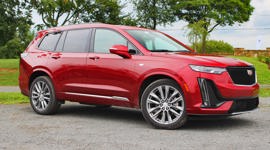Comparison Data
|
2020 Cadillac XT6 Sport
|
2020 Lincoln Aviator Reserve
|
|---|---|
|
Engine Displacement
3.6L
|
3.0L
|
|
Engine Cylinders
V6
|
V6
|
|
Peak Horsepower
310 hp
|
400 hp
|
|
Peak Torque
271 lb-ft
|
415 lb-ft
|
|
Fuel Economy
13.5/9.7/11.8 L/100 km cty/hwy/cmb
|
13.7/9.7/11.9 L/100 km cty/hwy/cmb
|
|
Cargo Space
356 / 1,220 / 2,228 L behind 3rd/2nd/1st row
|
518 / 1,183 / 2,200 L behind 3rd/2nd/1st row
|
|
Base Price
$63,798
|
$69,000
|
|
A/C Tax
$100
|
$100
|
|
Destination Fee
$2,100
|
$2,100
|
|
Price as Tested
$83,228
|
$87,435
|
|
Optional Equipment
$17,230
|
$16,335
|
Cadillac and Lincoln have been struggling for relevance in the past few years. Constantly overshadowed by rivals from Japan and Germany (and even Korea), the brands’ products have often been described as dated and lacking distinction. But the tide has slowly been turning in recent years, and both Lincoln and Cadillac have taken up the challenge of delivering modern vehicles that fit their customers’ lives.
The 2020 Cadillac XT6 builds upon the brand’s recent crossover offerings, with a style-forward approach to a three-row vehicle. The 2020 Lincoln Aviator, meanwhile, is built on a new platform and offers a lot of high-end equipment, but risks delivering an underwhelming driving experience due to its slightly larger size.
Exterior Styling
With its slim headlights and large grille, the Cadillac doesn’t look like the larger and more popular Escalade, but rather like an inflated version of the XT5. It lacks its own personality but makes up for it with a pronounced and stately stance. The front end in particular looks far more stylish than the rear and side profile, which appear under-styled to say the least.
The Lincoln seems to attract a few more eyeballs on the road, but that’s perhaps due to its relative rarity. I’m not a fan of the front-end design, but its side profile is bold and the rear looks sharp too. In particular, the new wheel design is very attractive. The Aviator is also offered with a light-up badge on the grille, putting drivers in the same vanity bracket as Mercedes-Benz and BMW owners.
Lincoln Aviator Exterior Styling: 8/10
Cadillac XT6 Exterior Styling: 7.5/10
Interior Styling
The Cadillac XT6 has a decent but risk-averse interior. It’s easy to get accustomed to, even with a new rotary knob to control the infotainment system. You’ll find a nice mix of materials, and Cadillac doesn’t use many hard plastics inside. One oddity inside is the mix of buttons on the dashboard. Some are more conventional controls, like toggle switches integrated into the HVAC controls, while others are capacitive touch buttons that work similar to a touchscreen. The latter, however, are harder to determine when they’ve been pressed, penalizing the Cadillac’s usability in the process.
The carbon-fibre trim on the dash and door handles are a little unsatisfying, suggesting performance over luxury. But the XT6 isn’t fooling anyone – it’s a three-row crossover through and through.
The Lincoln Aviator has a slightly more upscale interior design, but there are more buttons and controls to get used to; there’s even a button on an indentation of the steering wheel to engage voice recognition. However, the buttons are easier to get used to.
I’m not a huge fan of the sliding doors that Lincoln uses for its storage cubbies; they show perforations or lines where they bend away, and it looks a little low-end. However, the same cannot be said about the materials and upholstery, which look and feel top-grade. There’s also a full centre console in the second row of the Aviator, allowing the vehicle to feel more like a first-class cabin – a nice touch for those in the rear.
One downside is the buttons used to open the doors from the inside can be a bit finicky, occasionally requiring a second press. Lincoln effortlessly executes its luxury design and style. The Cadillac feels like it’s trying too hard, and struggling to show off its luxury appointments.
Lincoln Aviator Interior Styling: 8/10
Cadillac XT6 Interior Styling: 7/10
Interior Space and Practicality
The Cadillac is surprisingly large and offers a lot of headroom for occupants. It feels like you’re riding lower than the Aviator, offering a slightly more car-like ride. While not all crossover buyers are fans of this seating position, it’s nice to have the option to get nice and low. The Cadillac has less cargo room behind its third row, but more space behind the second and first rows than the Aviator (although the differences are slight).
The Aviator feels like a larger vehicle, and offers extra cargo space behind the third row, but not anywhere else. However, passenger room feels more accommodating in the Lincoln. I’m also more impressed with the in-cabin storage space in the Aviator, as it’s easy to find a place for items while on the go. Both vehicles are practical, with power folding seats that should make it easy for kids to get into the third row.
Lincoln Aviator Interior Space and Practicality: 8/10
Cadillac XT6 Interior Space and Practicality: 8/10
Features and Technology
Important luxury car features range from impressive seat controls and ambiance-building lights and sounds, as well as safety and driver assistance systems that make the vehicles easier to operate.
The XT6 packs gadget-friendly features like Android Auto and Apple CarPlay support and a wireless phone charger. It also has a generously sized eight-inch infotainment screen that’s set in the dash rather than perched on top of it. Unfortunately, the screen isn’t the most responsive at times, requiring multiple taps to access features. On-road technology includes adaptive cruise control and lane-keeping assistance, the latter of which vibrates the seat instead of the steering wheel or emitting a loud beep.
The Aviator has many of the same features, save wireless phone charging, while the infotainment screen is a bit larger at 10 inches.
But it’s the details in the Lincoln that leave an impression. There are more ambient lighting features to go along various chimes that all have an extra flair to them (they are recorded by the Detroit Symphony Orchestra, after all). Worth mentioning is the four-zone climate control system, compared to three in the XT6, 30-way adjustable front seats, and heated and ventilated second-row seats.
Lincoln Aviator Features and Technology: 9/10
Cadillac XT6 Features and Technology: 7/10
Powertrain
Under the hood of the XT6 is a 3.6L V6 that’s smooth and quiet in operation. The engine, which makes 310 hp and 271 lb-ft of torque, is paired with a nine-speed automatic transmission and a driver-selectable all-wheel drive system. In Tour mode, it operates in front-wheel drive; Sport, Off-Road, and the aptly named AWD modes power all four wheels.
The Cadillac also features a special twin-clutch system to route all the available power at the rear wheels to either the left or right wheel. This helps the vehicle feel sporty and responsive and should help improve traction as well. The powertrain in the Cadillac is perfectly adequate, smooth and responsive. There are very few moments where it isn’t up to the task or left feeling overwhelmed.
The Lincoln Aviator is beyond adequate. It uses a turbocharged V6 engine that makes 400 hp and 415 lb-ft of torque, paired with a ten-speed automatic transmission. The Aviator features a rear-wheel drive platform, though the tester here sports all-wheel drive. That makes it feel a bit more balanced on the road, although the Aviator is noticeably heavier than the Cadillac. The difference in output really shows itself right off the line, as the Lincoln has plenty of torque, but the vehicle is also faster overall. The transmission is well sorted, with smooth gear changes and no protest when more speed is desired.
Lincoln Aviator Powertrain: 7.5/10
Cadillac XT6 Powertrain: 8.5/10
Fuel Economy
The two vehicles feature similar fuel economy figures. Natural Resources Canada (NRCan) rates the XT6 to return 13.5 L/100 km in the city, 9.7 L/100 km on the highway and 11.8 L/100 km combined. These reasonable numbers are largely due to the all-wheel drive system that can operate in front-wheel drive when conditions are favourable. It also has a cylinder deactivation system, so highway drives with limited load will use less fuel by running on four cylinders instead of six.
The Aviator returns 13.7 L/100 km in the city, 9.7 L/100 km on the highway and 11.9 L/100 km combined, according to NRCan. The clever ten-speed automatic transmission works its magic here along with active grille shutters to help reduce fuel consumption. It’s impressive what Lincoln has been able to accomplish fuel economy-wise, and buyers can opt for a hybrid system if they’re looking for fewer fuel stops.
Lincoln Aviator Fuel Economy: 7.5/10
Cadillac XT6 Fuel Economy: 7.5/10
Driving Feel
On the road, the Cadillac feels much smaller and easier to handle than the Aviator. It doesn’t feel like a three-row crossover and acts much more like the smaller XT5. It’s agile, though body roll is noticeable in some conditions. Ride quality is up to par for the class thanks to an adaptive damping system that conforms to road conditions and adjusts every two milliseconds.
Sadly, the Cadillac feels a bit limited as a luxury vehicle. There’s something unremarkable about the drive. Premium vehicles can occasionally be burdened with too many gadgets and features that interfere with the driving experience, an issue the XT6 manages to avoid. Yet it’s arguably too good in this regard, feeling definitively less luxurious as a result and unworthy of its price tag.
The Lincoln, on the other hand, feels far more stately and a bit more like a full-size SUV rather than a slightly smaller one. This feeling is what buyers pay a premium for – to feel like they’re in command of something that’s special and has road presence. And that’s exactly what the Lincoln Aviator delivers.
Its smooth, limo-like ride is what’s expected out of the premium SUV class. Like the Cadillac, it has adaptive suspension as well, but it’s far more advanced. With 12 sensors monitoring the vehicle’s motions and road 500 times per second, it makes setting adjustments up to 100 times per second. This isn’t immediately noticeable in comparison to the Cadillac, so there must be a point of diminishing returns with how much the suspension settings can be adjusted per second. However, the vehicle has a feature that uses the front-facing camera and radar (typically used for safety features and adaptive cruise control) that can detect imperfections in the road like potholes and adjust in advance of them so that the ride is unaffected. As a result, the Aviator offers a higher-end ride and driving feel, something that feels modern and advanced in 2020, rather than the Cadillac, which feels limited lacking the driving experience mandatory in a luxury badged vehicle.
Lincoln Aviator Driving Feel: 9/10
Cadillac XT6 Driving Feel: 7.5/10
Safety
Both vehicles come with a very long list of safety features. The Cadillac is equipped with adaptive cruise control, blind-spot monitoring, lane-keep assist, forward collision warning, an indicator describing how close you are to the vehicle ahead, and pedestrian detection for the front and rear, as well as rear cross-traffic alert. The Insurance Institute for Highway Safety (IIHS) ranks the XT6 as a Top Safety Pick, its second-highest rating. Ultimately, the XT6 is penalized for headlights that can cause glare, according to the IIHS.
The Lincoln Aviator comes with adaptive cruise control, evasive steering assistance, front and rear automatic braking, and lane-keep assist, along with lane-centring capability and blind-spot monitoring. It’s not as fully featured as the Cadillac in this regard, and the IIHS notes that the Aviator isn’t worthy of a Top Safety Pick rating, citing poor crash results and headlights as the reasoning.
Lincoln Aviator Safety: 7/10
Cadillac XT6 Safety: 8.5/10
Value
Luxury vehicles in general aren’t typically considered bargains, and both of these vehicles have asking prices in excess of $80,000, which should make even the most carefree shoppers think twice about what they’re getting for the money. The Cadillac XT6 Sport has a base price of $63,798 before freight and fees, but our tester adds the $4,255 Platinum Package, $2,705 Enhanced Visibility and Technology Package, $2,275 Driver Assist Package, and an $1,250 enhanced infotainment system to go along with the upgraded paint finish, upgraded headlights, a trailer hitch, and floor mats. There’s also upgraded 20-inch wheels, which carry a price of $3,740, and after destination and A/C charges, the vehicle has an as-tested price of $83,228.
The Lincoln Aviator is slightly more expensive, with a starting price of $68,500 before freight and fees, although our tester had the $850 red exterior paint, $150 floor liners, $735 full rear console, $9,000 Elements Package Plus, $2,000 Convenience Package and the 3,500 Dynamic Handling Package. The litany of options, as well as the delivery and A/C fees, lead to an $87,435 as-tested price. You get a far more special interior, more space behind the third row and higher-class equipment in the Lincoln, though the Cadillac does have more cargo space overall and a better safety rating.
Lincoln Aviator Value: 6/10
Cadillac XT6 Value: 7.5/10
The Verdict
Our gut says the Lincoln comes in as the higher-end vehicle – the one that buyers who are considering the two will feel happiest with. The Cadillac feels like it’s missing an eye-catching feature or experience, while the Lincoln has a higher-end cabin, more powerful engine, more space behind the third-row seats and a smoother ride. It’s been a while since Lincoln has offered anything compelling like this before, but now it’s risen up to the challenge in the premium segment with something downright attractive.
